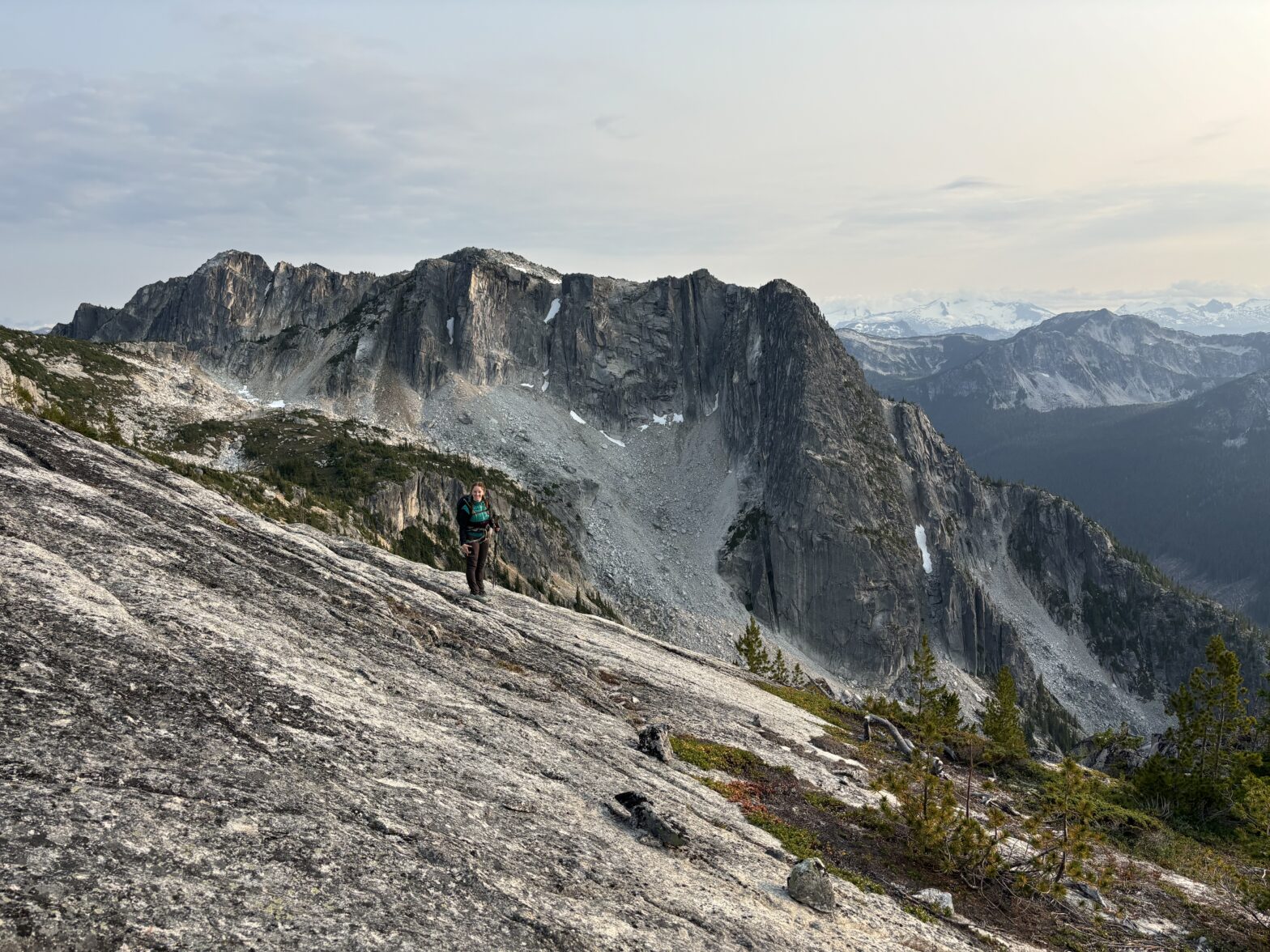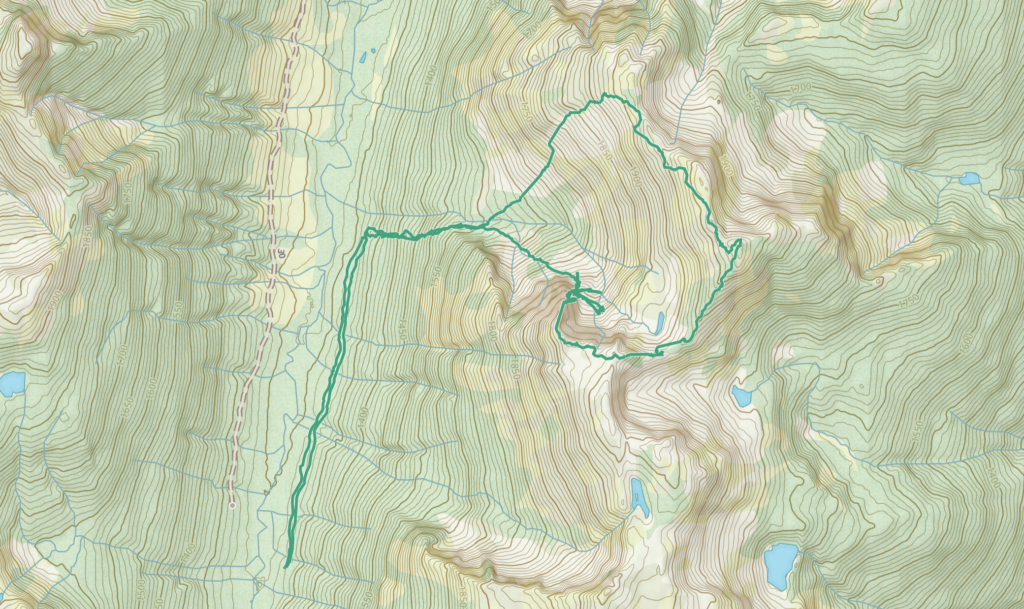
Elevation Gain: 933m
Distance: 9.81km
Total Time: 12 hours 33 minutes
Date: July 27th, 2024
While doing some sleuthing through bivouac.com I came across an alpine route I had never heard of. A route called the Back of Beyond Buttress, first climbed by Jordan Peters and Michael Layton in 2002. It climbs at ~5.10b with the 3 hardest pitches starting right at the beginning of a prominent buttress on Mount Ichor’s central summit point. The climbing eases off after 4 pitches of steep slab and continues up grooves and corner systems to the top of the ridge. From there one can scramble to the central summit, descend off the west side or continue another 700m along the ridge to the true summit at the northernmost point. The pictures of the route showed immaculate thin hands splitter cracks and interesting looking ridge climbing and so I was immediately captivated. Despite how classic the route appears to look, it’s never made it into any guide book, including Kevin McLane’s latest edition. Richard So had a good report on his ascent and otherwise there weren’t many mentions around the internet.
Mount Ichor itself is situated at the northern end of the West Kookipi valley and standard access is through Boston Bar and then the Nahatlatch River side. However, in 2021 flooding washed out all the major bridges at the Nahatlatch-Kookipi confluence and access from this side became impossible. By 2024, major repairs had been underway, but Kookipi FSR still remained accessible from the South only. Andrea and I went on a recon mission the week before and drove on service roads all the way from Harrison Hotsprings for an attempt up Nlaka Peak. We discovered the Kookipi 400 road had been recently repaired and the forest travel to Nlaka Peak was really straight forward. Our route had put is in direct eye line with the Back of Beyond Buttress and we were fired up to get back out there while access was still in.
One week later and we found ourselves again making the long drive out up East Harrison FSR to the Kookipi area. This time we stopped around the 40km mark to camp and rest up near a beautiful river side spot. We woke up at 5am the next morning and finished up the drive West Kookipi valley. There was a new spur road getting built directly underneath the access point for Mount Ichor and we had spotted it from the ridge of Nlaka Peak. Our plan was to take that spur road, but as we rounded the first switch back a massive ditch stopped us. As it turned out the road was so new they hadn’t even put the culverts in yet. Nonetheless, road walking is better than bush whacking so we geared up and started the short plod along the road.
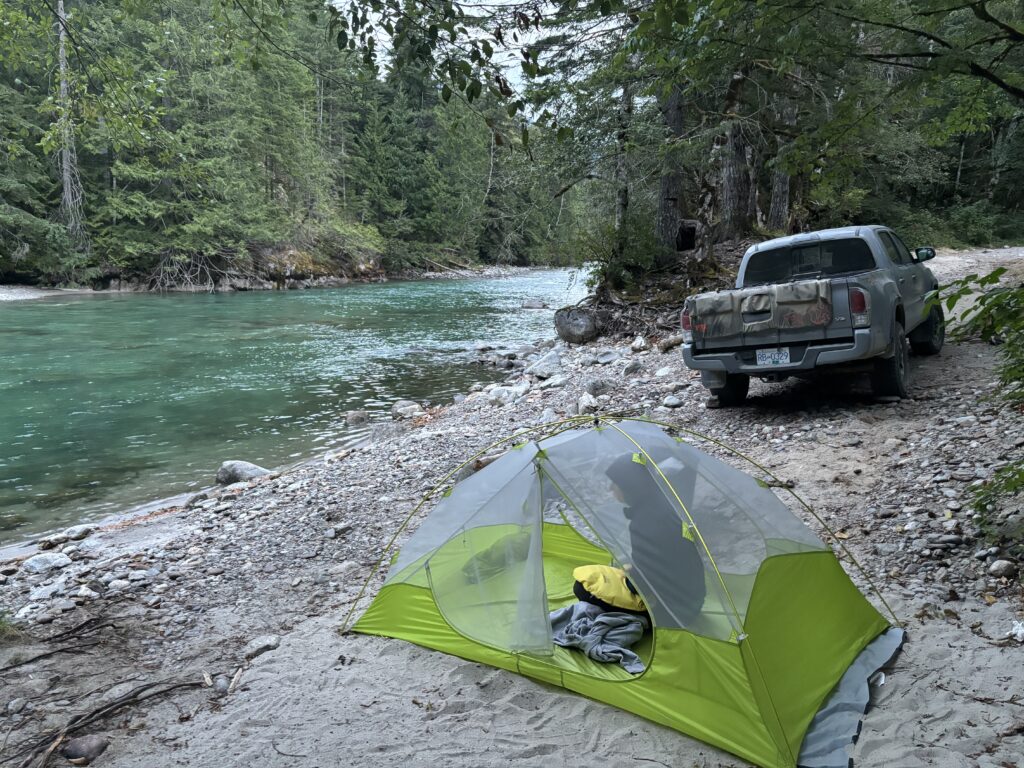
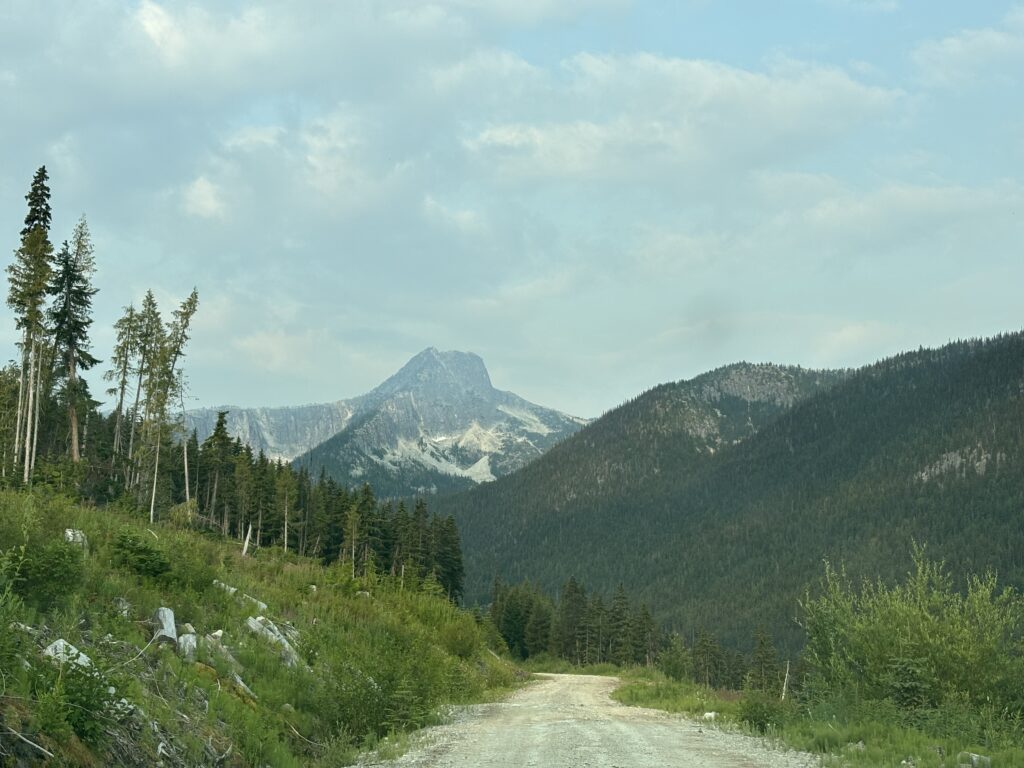
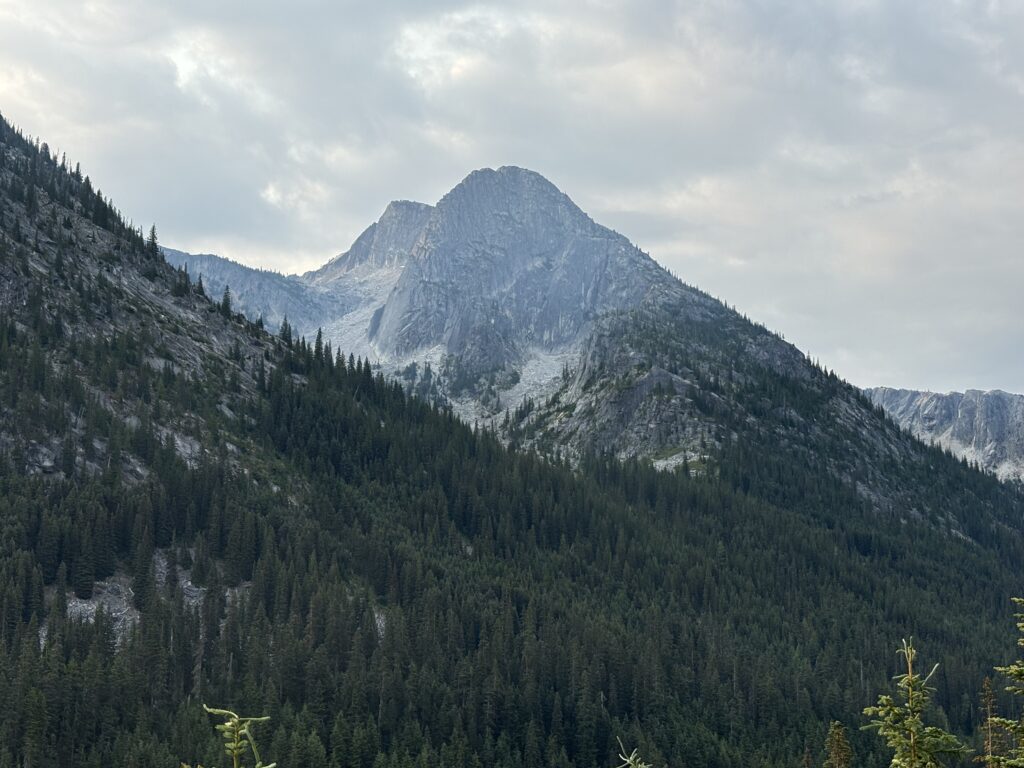
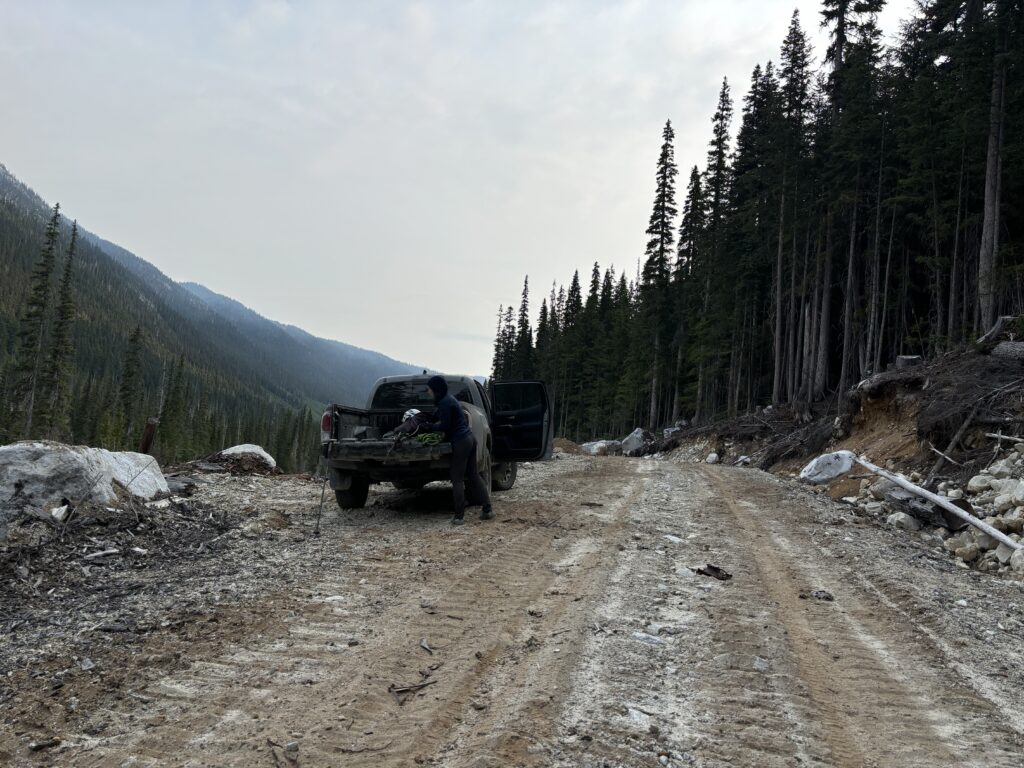
By pure luck, the road ended at exactly the spot we planned to ascend up through the forest. We turned off the road and ascended up through relatively open, albeit steep, forest to massive boulder field below the back of beyond buttress. Above tree line, we boulder hopped for a ways until reaching the obvious and massive endurance slab that marked the start of the route. The steep 4 pitch slab looked awesome in person. I can only imagine the FA party happening upon the long running splitter cracks to the top.
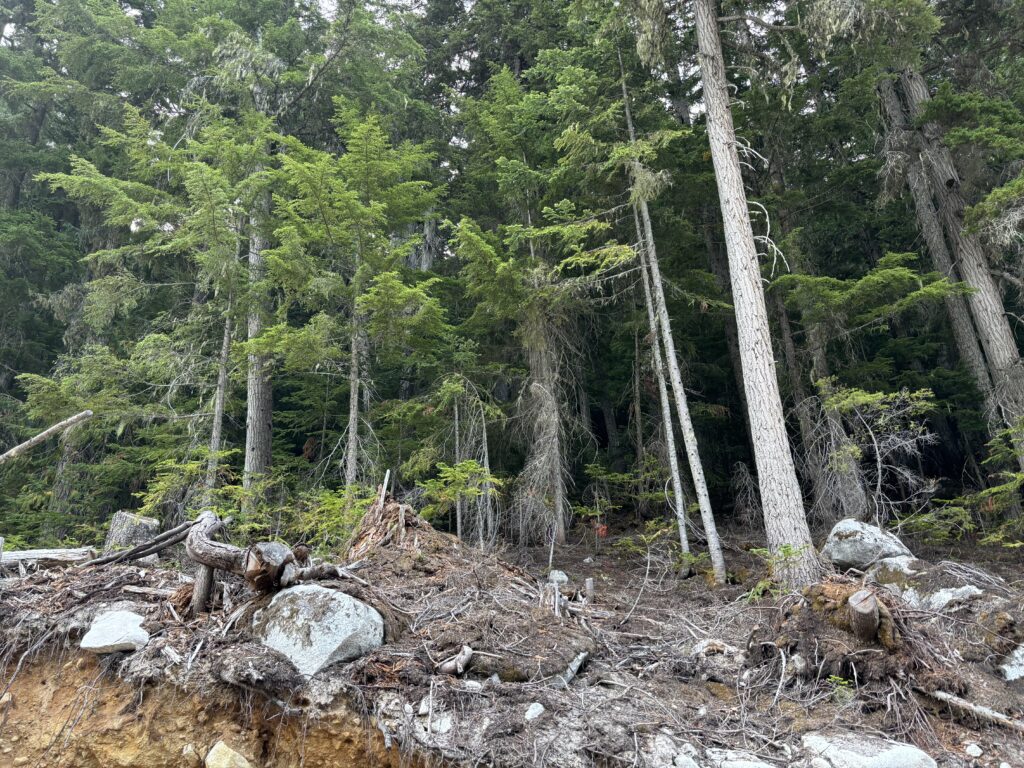
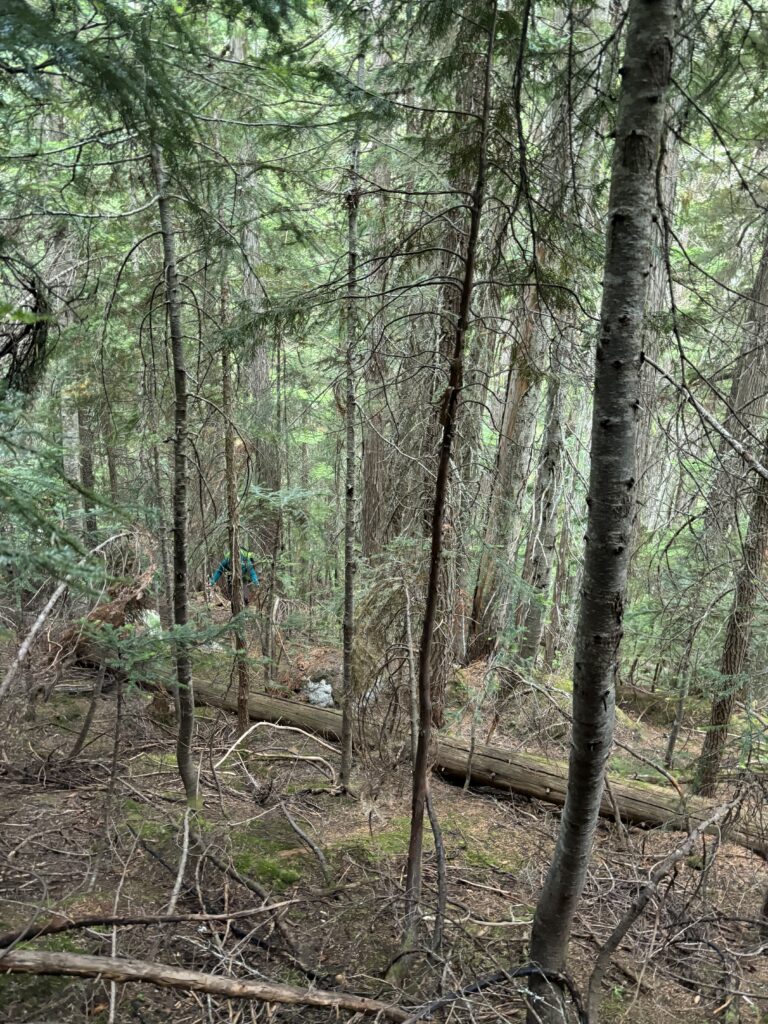
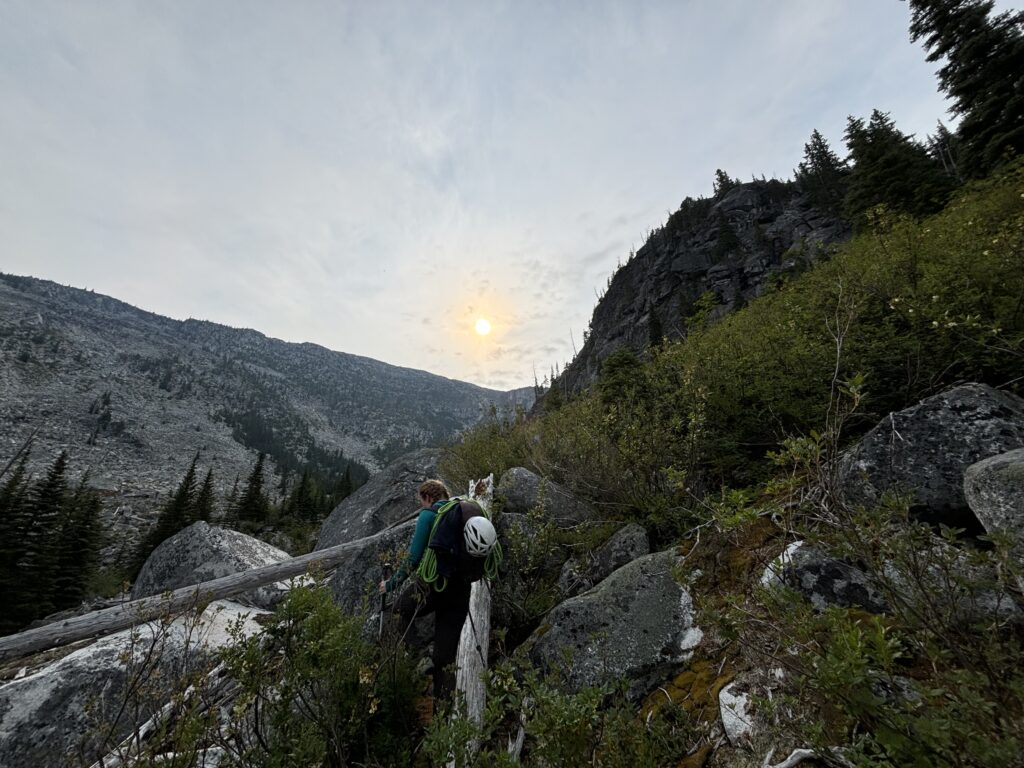
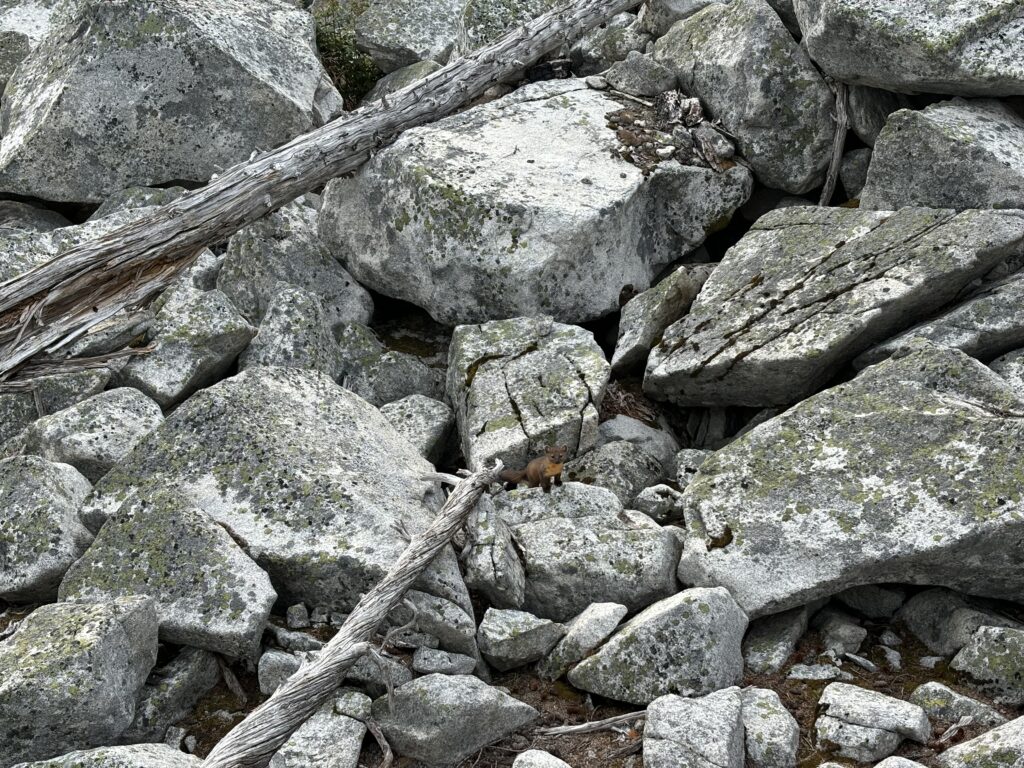
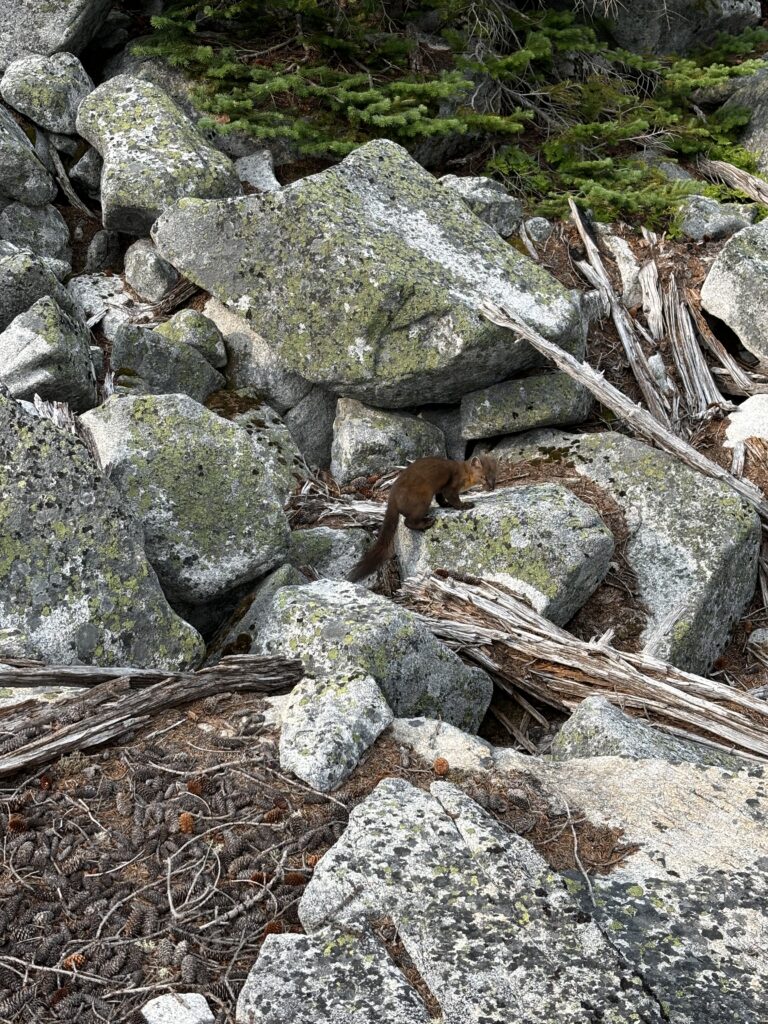
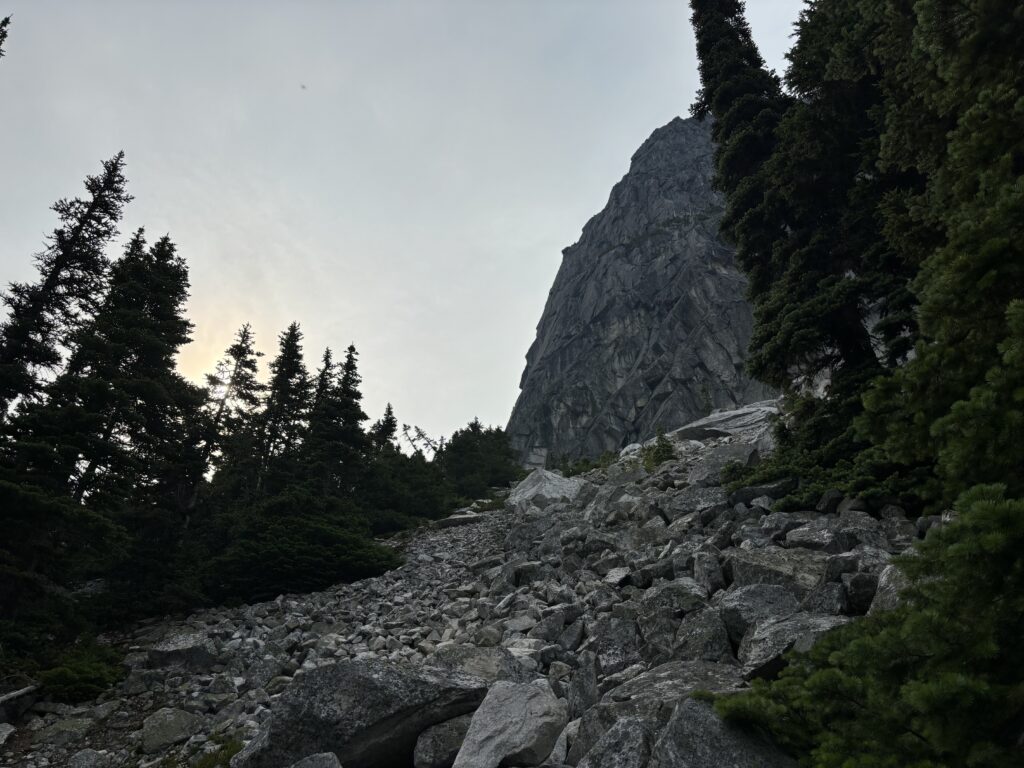
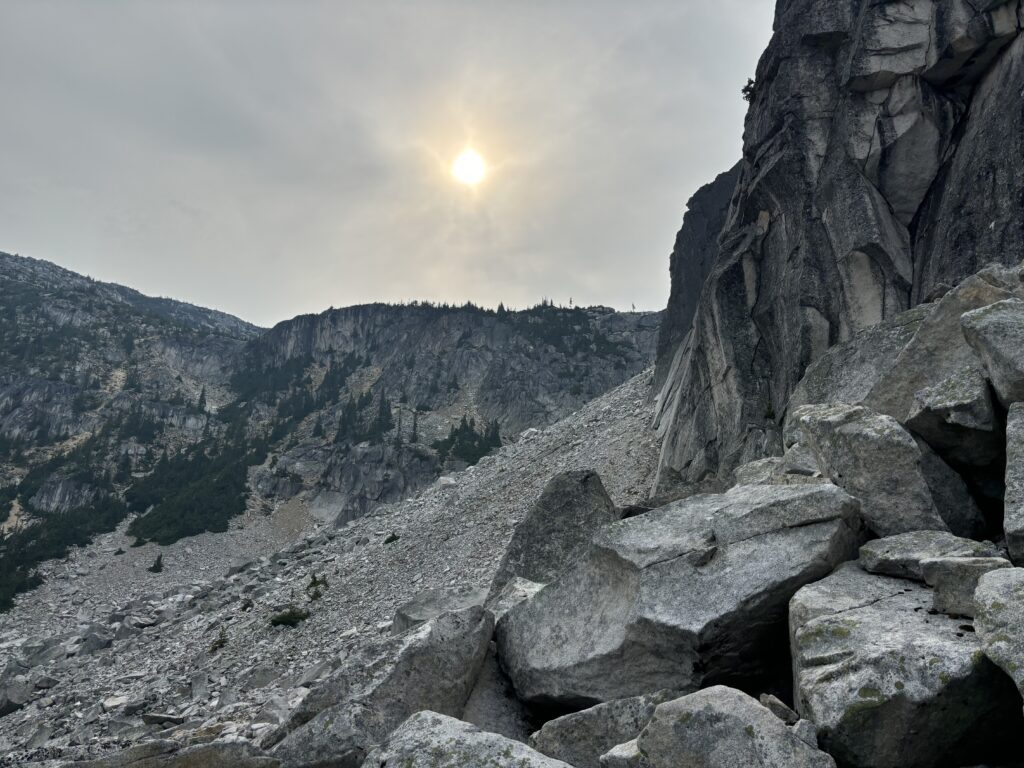
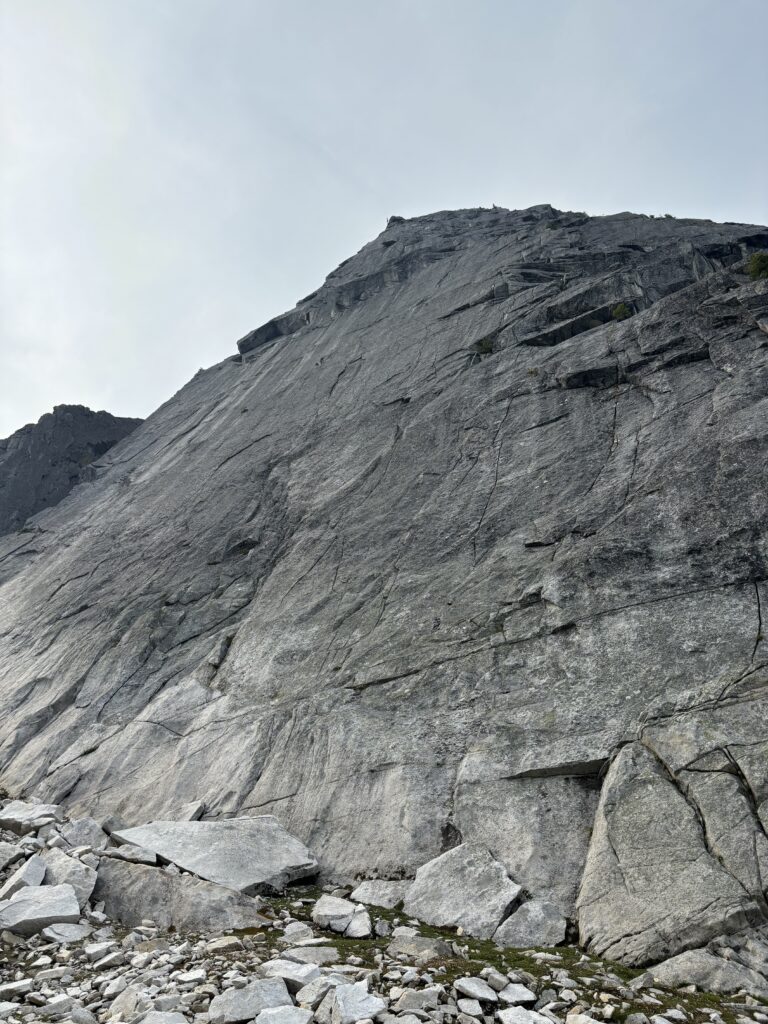
Andrea and I decided she’d get the first lead and I would take the committing pitch 2 crack traverse. Pitch 1 called for 5.8 splitter crack up the lower angle section of the endurance slab with an optional 10m up the first 10b section of the face as it steepened. Andrea headed off up the route and climbed easily through the first section. She spent a bit of time thinking about the 10b part and then fired up it, stopping below a roof bulge out left. I climbed up and then swung leads into the next pitch. The first part was insecure with grass filled cracks, but good feet on the bulge made it manageable. I then climbed through bomber ring locks and thin hands until a few meters below a square cavity where a large flake had blown off the wall. The gear appeared to run out and the crack traverse was just ahead so I called for a take to think it out.
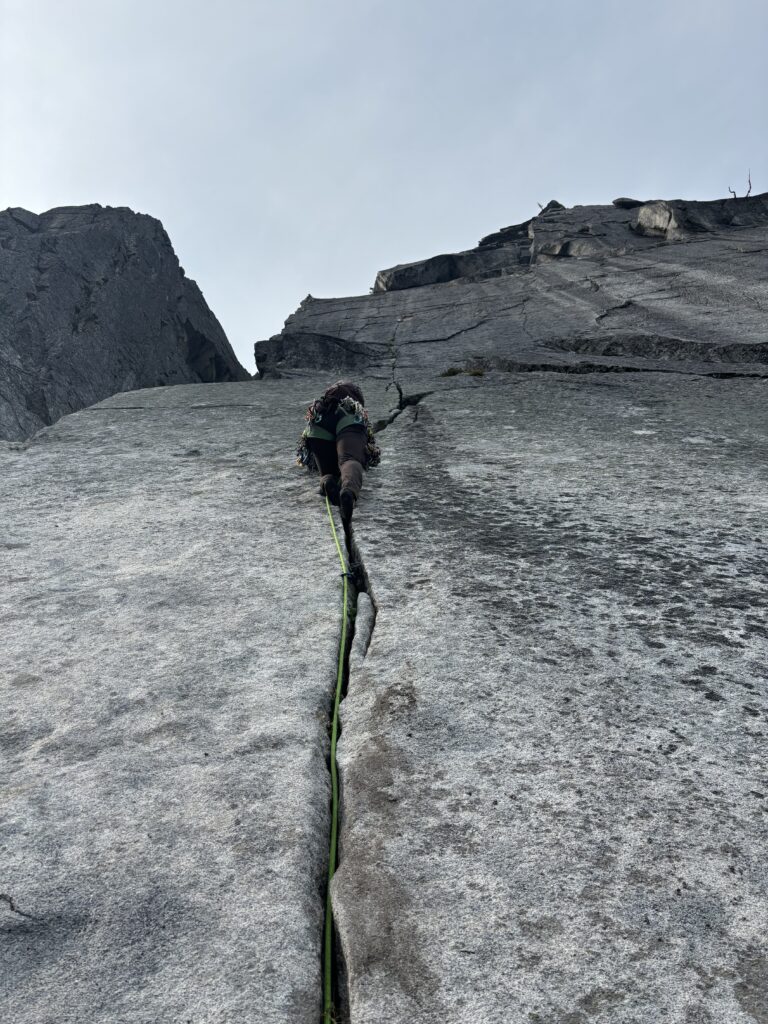
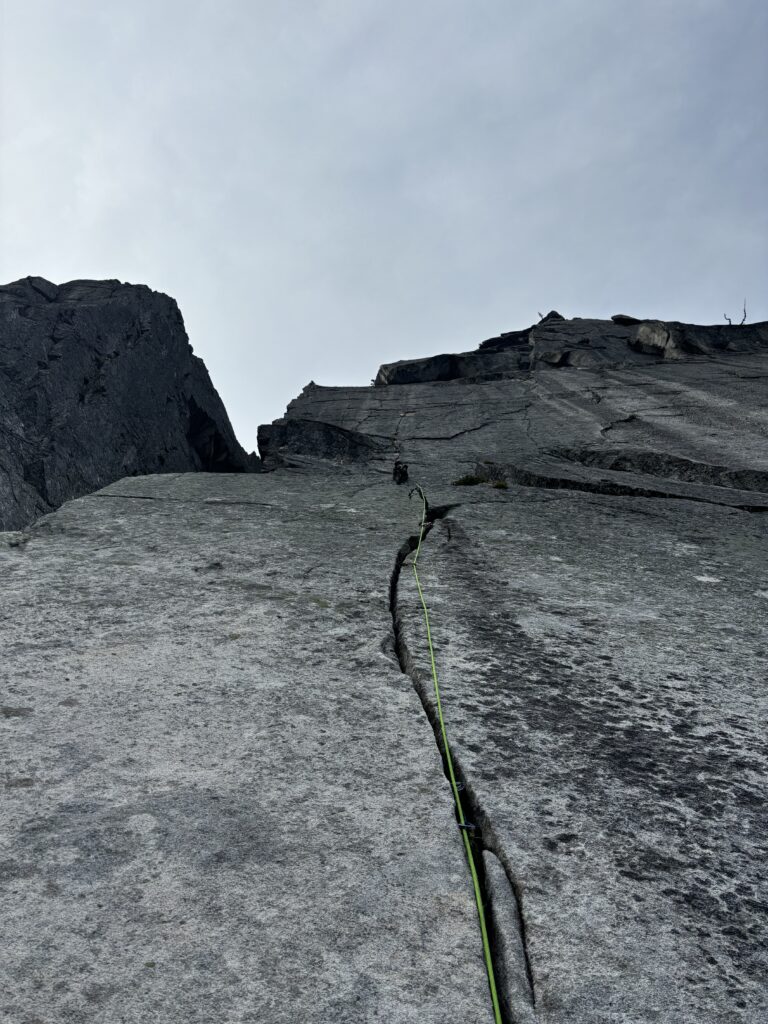
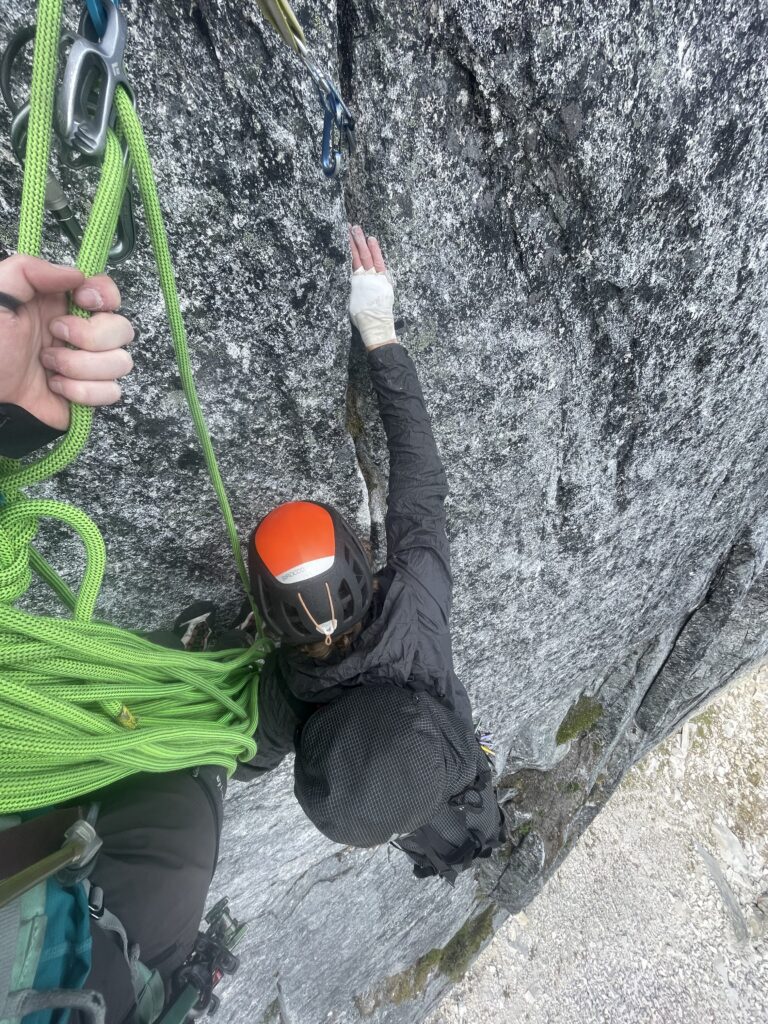
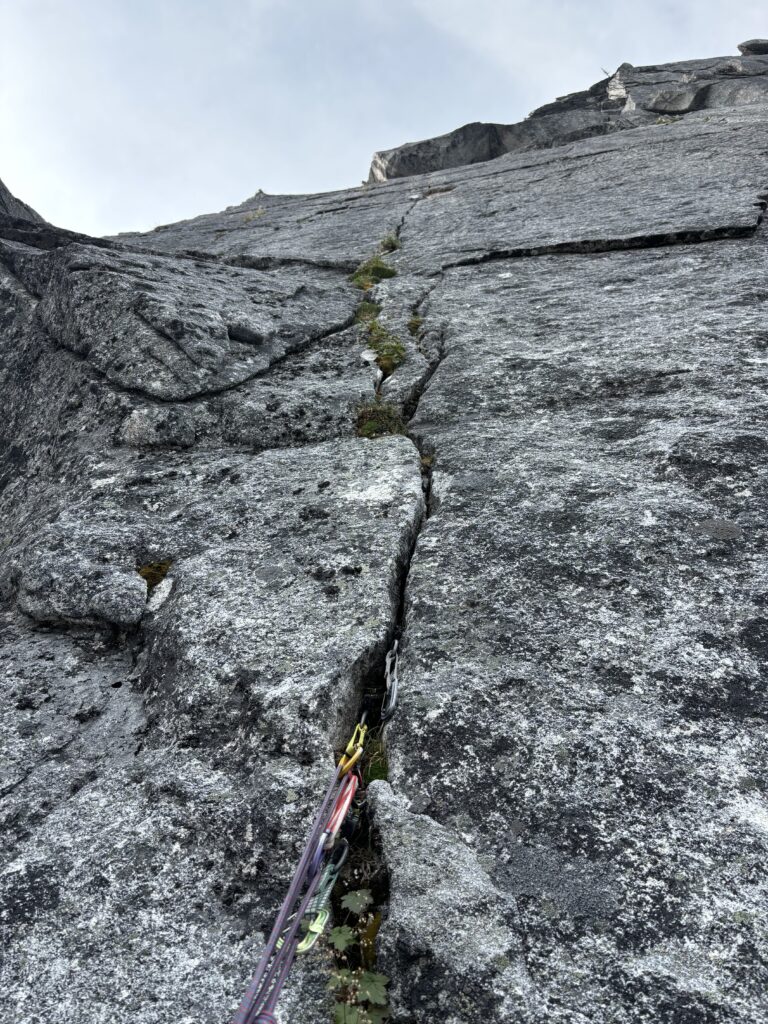
Now ready to commit, I climbed through insecure finger jams and ring locks and pulled myself into the cavity now high above my last piece. I searched around for good pro and managed to climb a bit higher to place an offset behind some solid feeling flakes in the cavity. I wasn’t confident it would hold a big whip, but it could atleast offer some mental protection on the traverse. From there I down climbed a bit and then made a reachy traverse into the next crack system and continued climbing again finding little to no protection options. After a bit of excavation I found a small micro cam placement, that I’d give a 2 out of 5 and then climbed up and left making a huge splits move to reach the next crack out left. Here, finally the crack offered better protection and jams and I climbed a bit further before building an anchor. Andrea seconded up and opted to do a swing into the final crack system as the reach was too far for her.
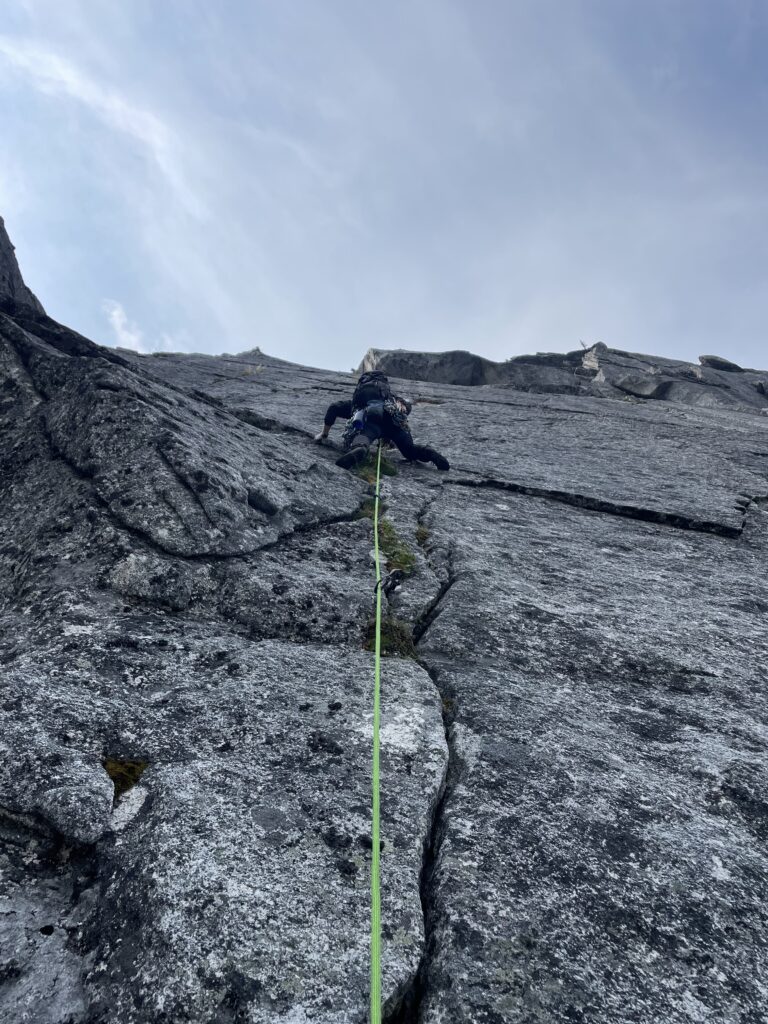
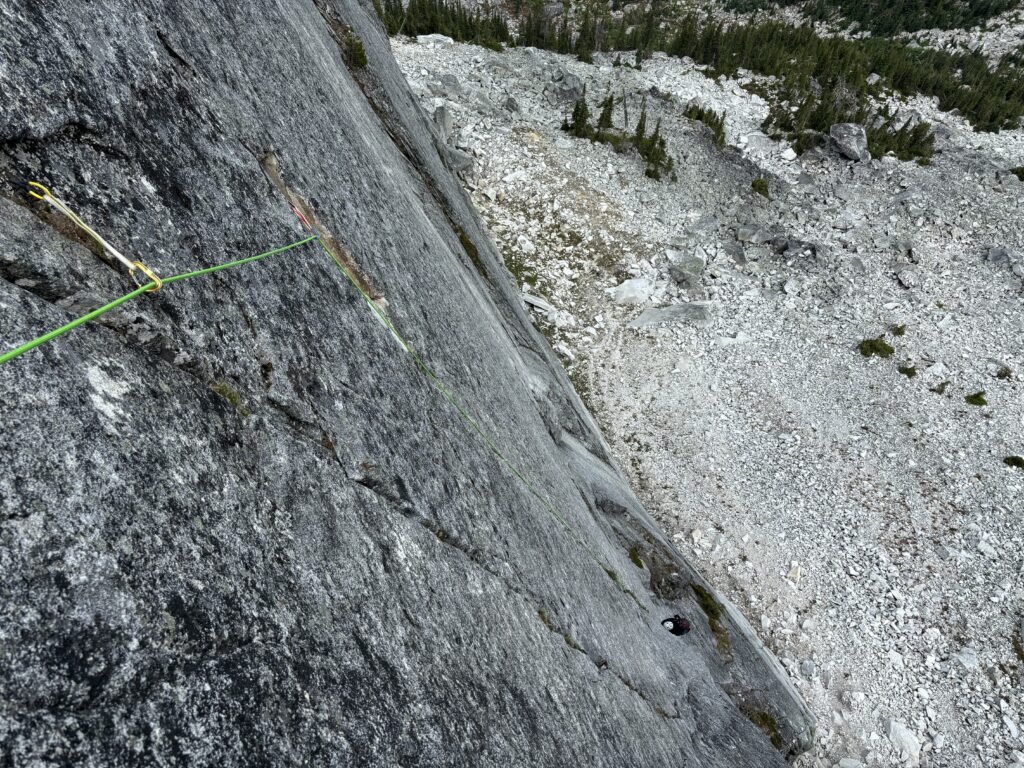
The third pitch was splitter thin hands to finger jams but very sustained. Andrea started up climbing mid way up before taking a rest and then continued just before the crack petered out. I seconded up and found this section to by quite pumpy on the ankles, but extremely fun climbing. I took the 4th pitch and it involved more technical face climbing and pinches on bottomed out cracks. It was quite insecure climbing and I nearly took a fall when my foot blew off a dusty edge. Thankfully, I held on and then topped out on the slab. I climbed a short ways through one of the numerous grooves and corners on the ridge and belayed Andrea up. As I looked around I noticed several large clouds building and started to get a bit anxious about the weather. One forecast model had called for potential afternoon thunderstorms, but all others had stated clear weather. We appeared to be somewhere in the middle in reality, but the clouds faded not long after.
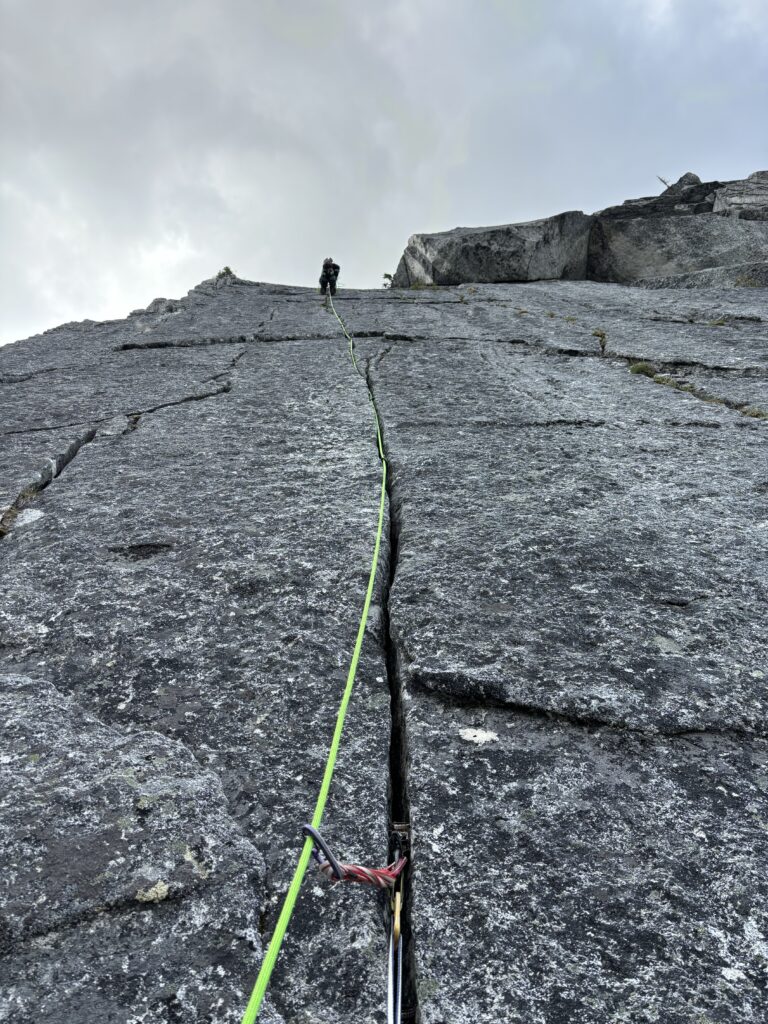
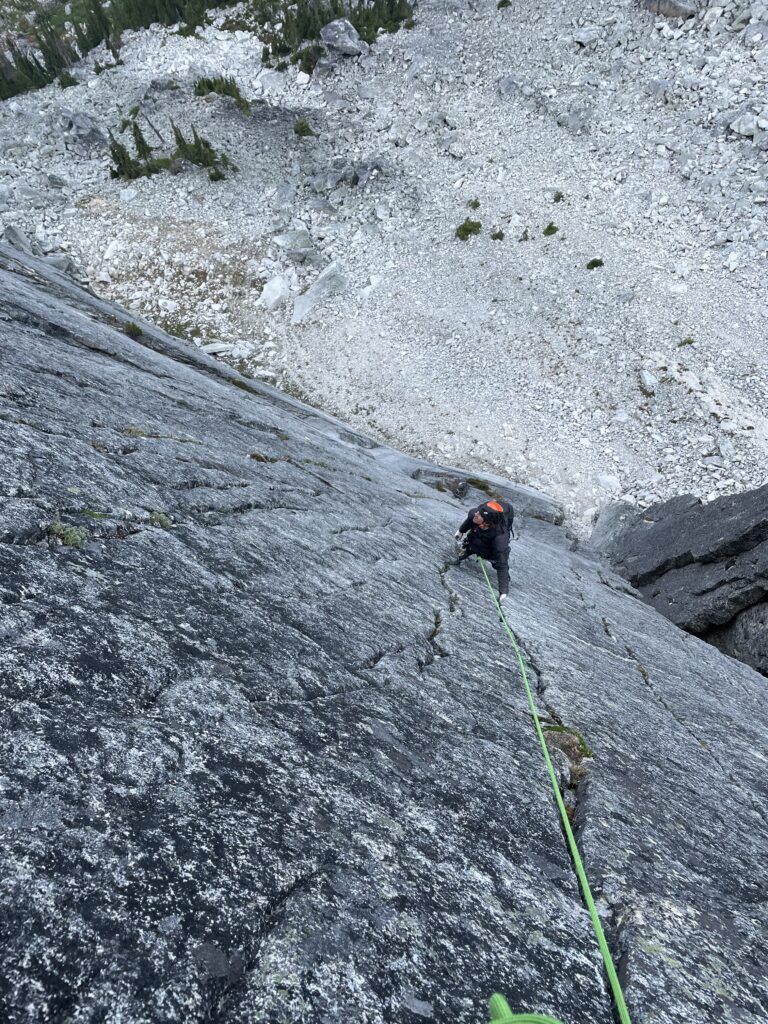
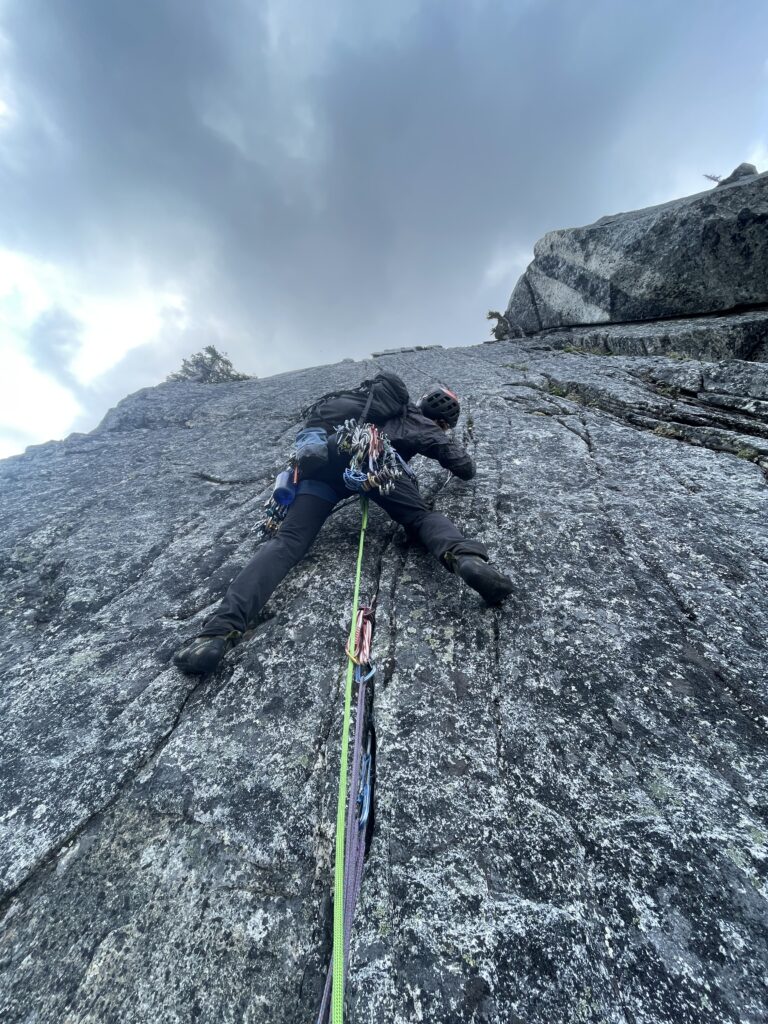
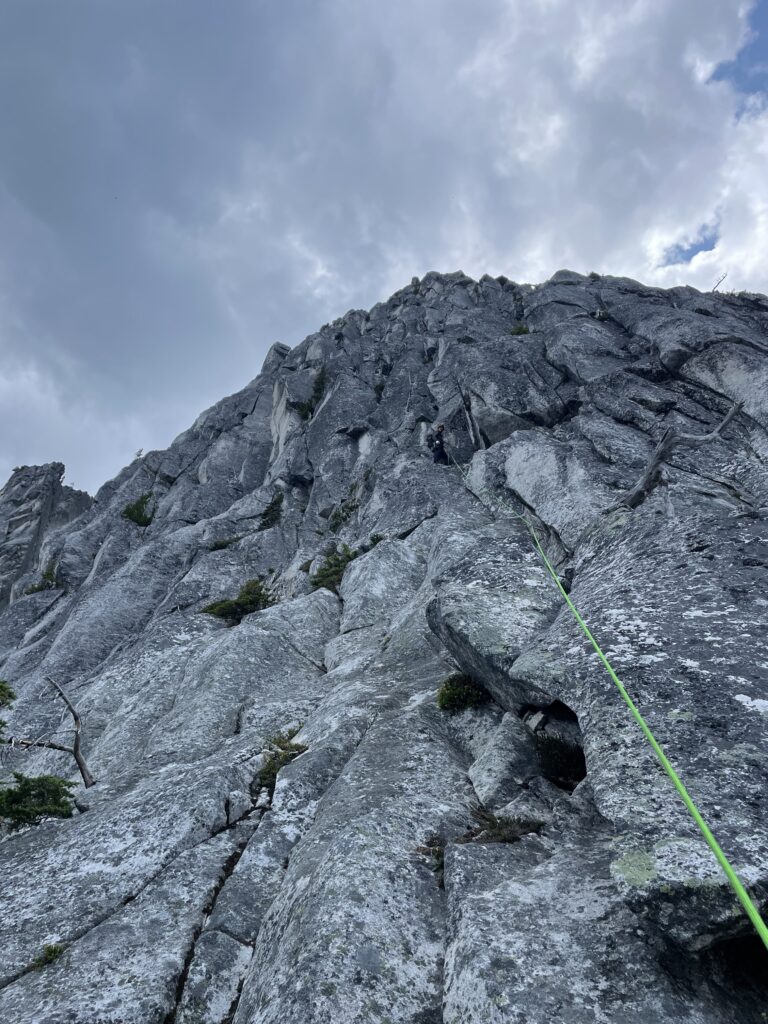
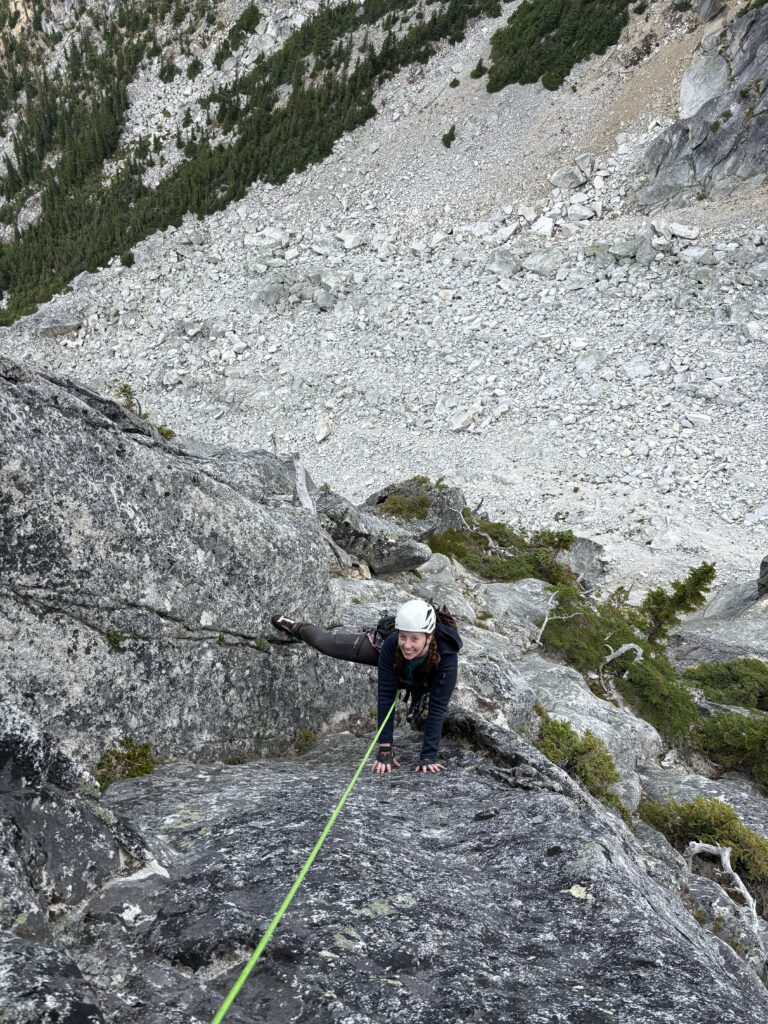
With the lightning anxiety beginning to subside, Andrea started climbing through some burly 5.9 moves and then up low 5th terrain just left of the ridge crest. Pitch 6, was in my opinion the best of the ridge pitches and it started with a section of 5.8/9 hand jams up a steep face and out underneath an awkward roof to easier terrain. I trended left from there on the east side of the ridge. Now I thought we’d have one last pitch to the scrambling terrain, but it turns out we were too far climber’s right of the original route. As Andrea lead up, she got cliffed out at the top and had to down climb and then traverse across a rope draggy section of ridge to regain the proper route. I then lead one last 60m pitch through some awkward and scruffy corners onto 4th class terrain. The rest of the ridge looked straightforward so we packed up the rope and scrambled towards the central summit of Ichor.
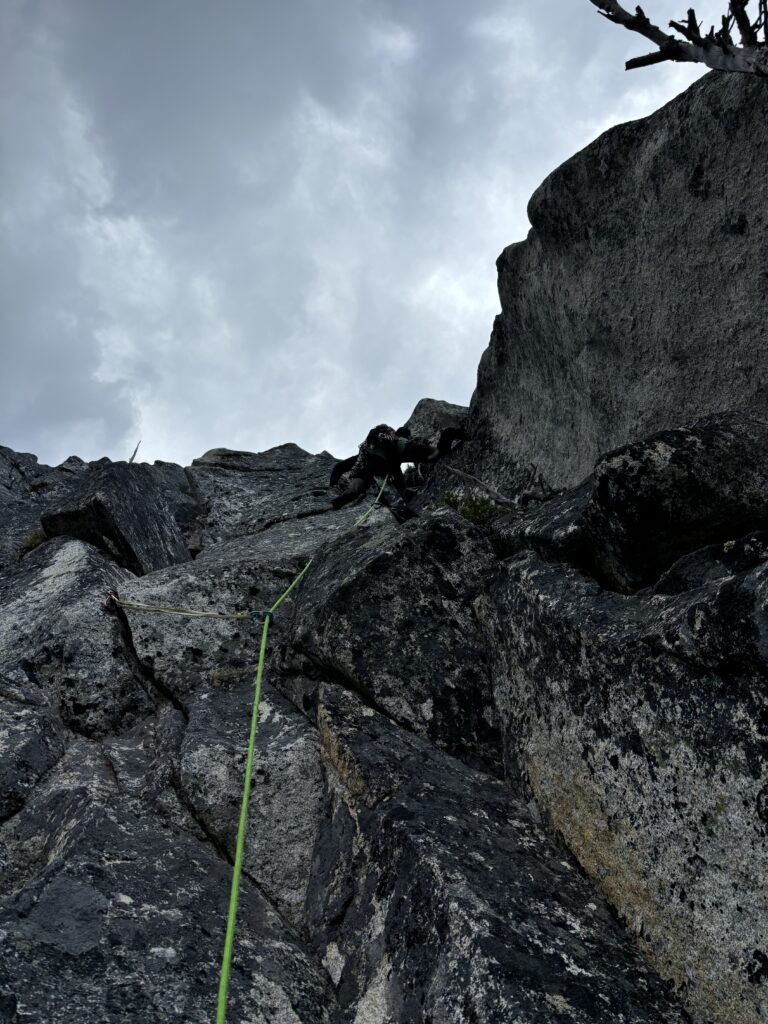
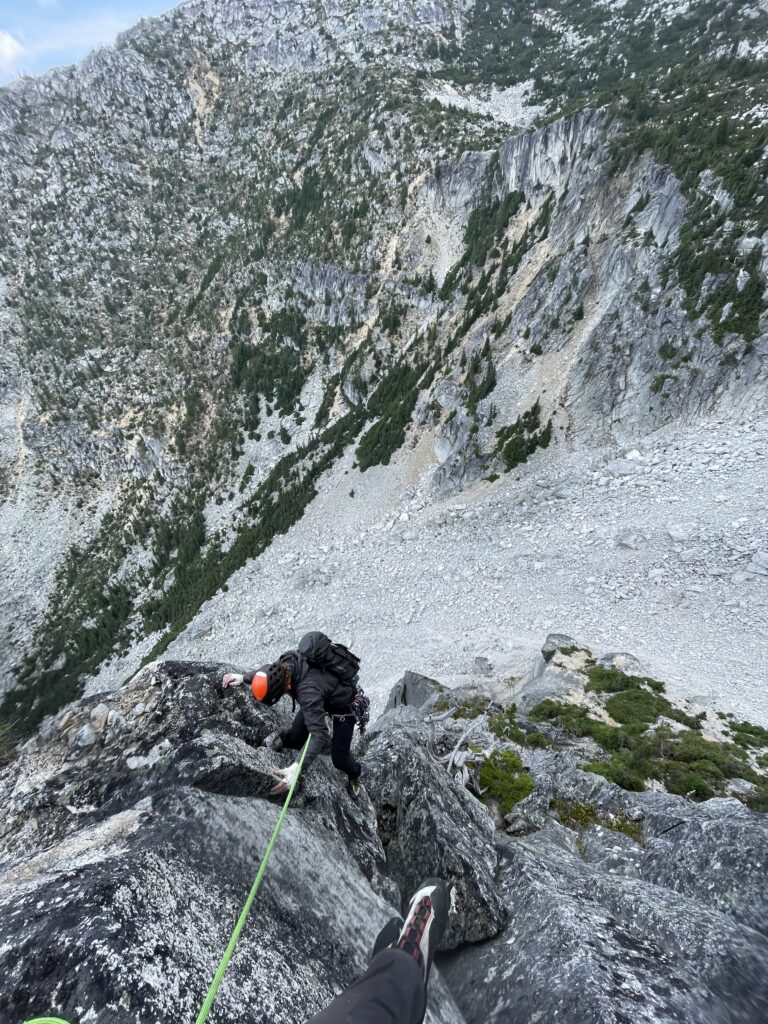
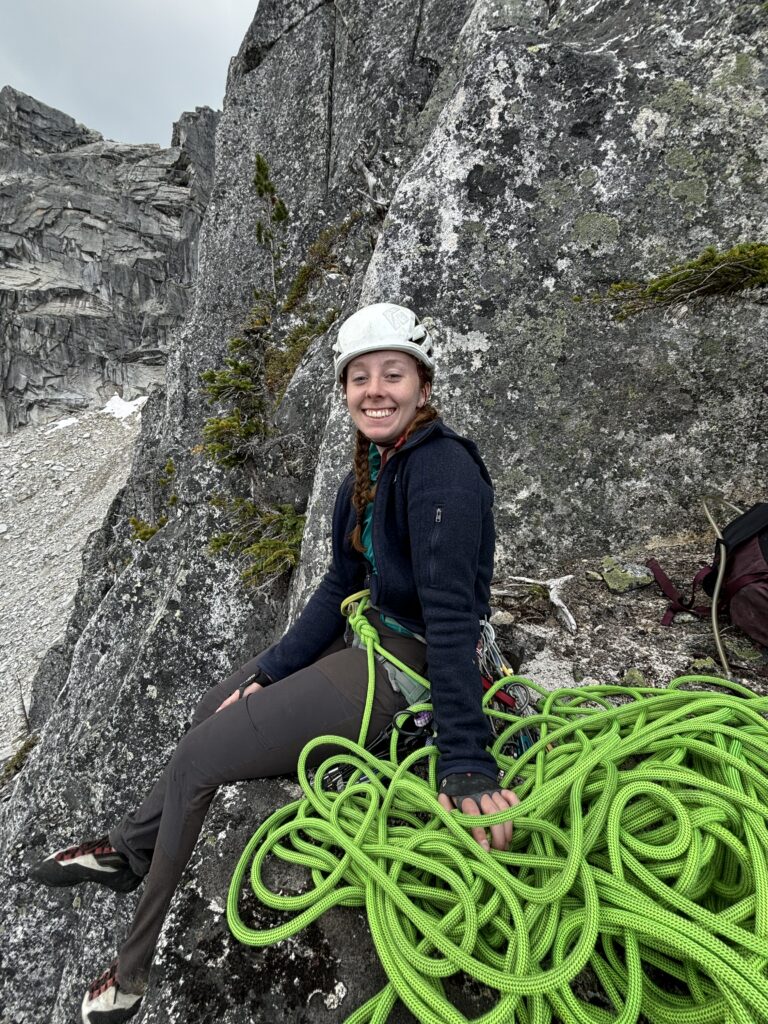
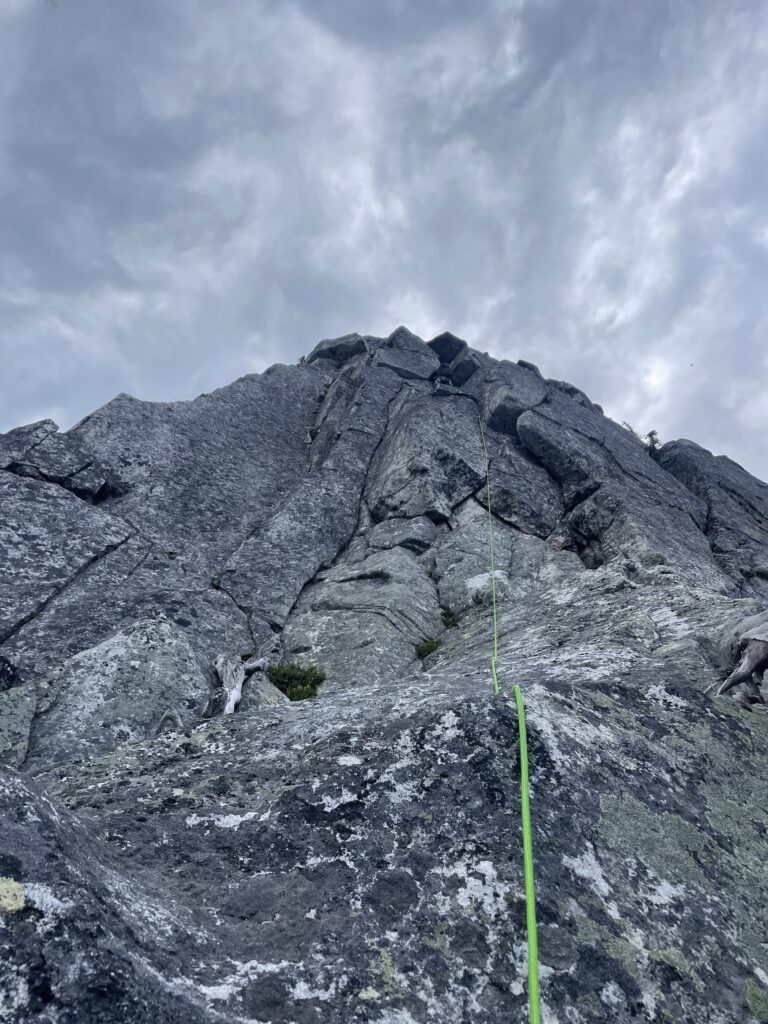
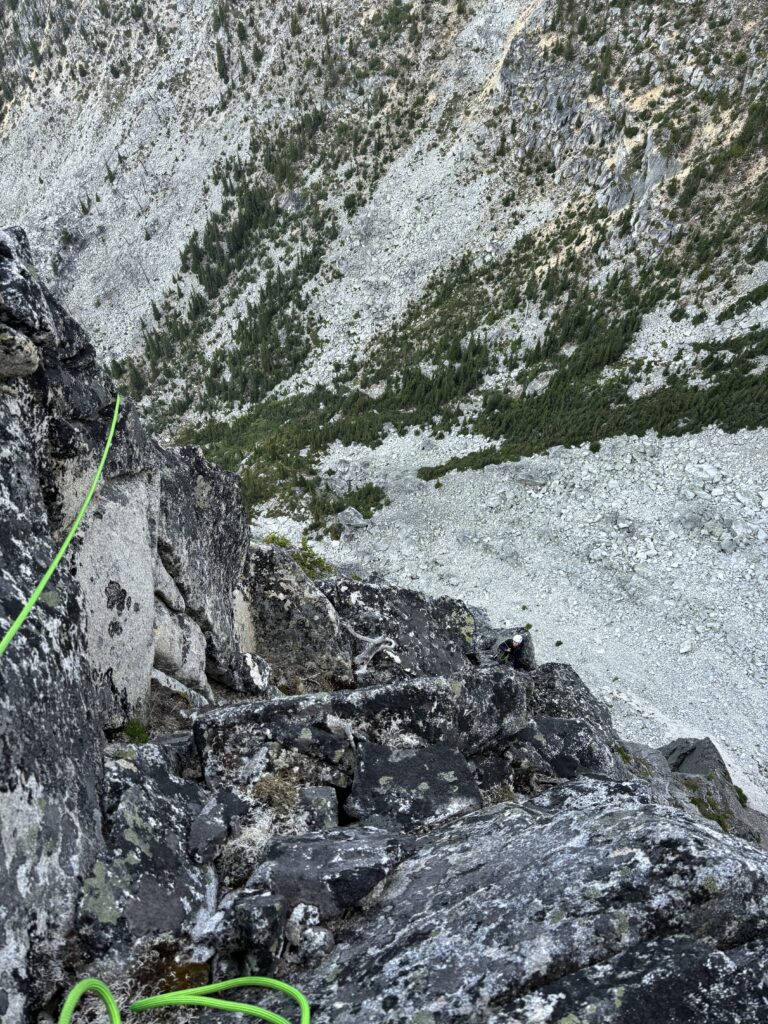
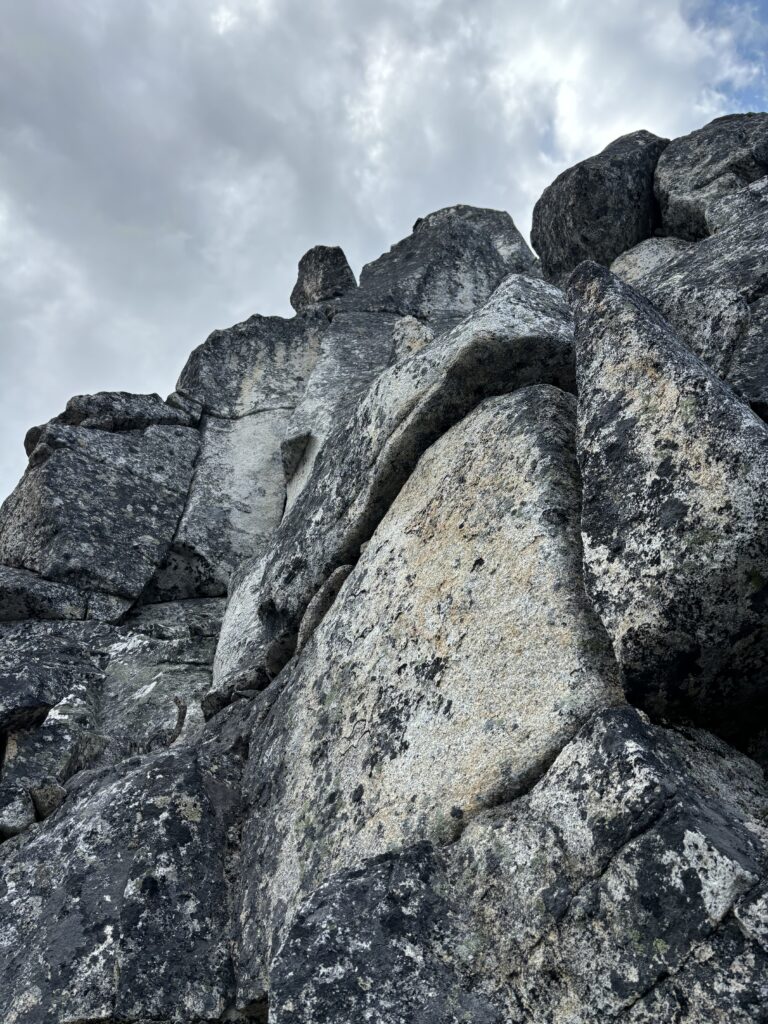
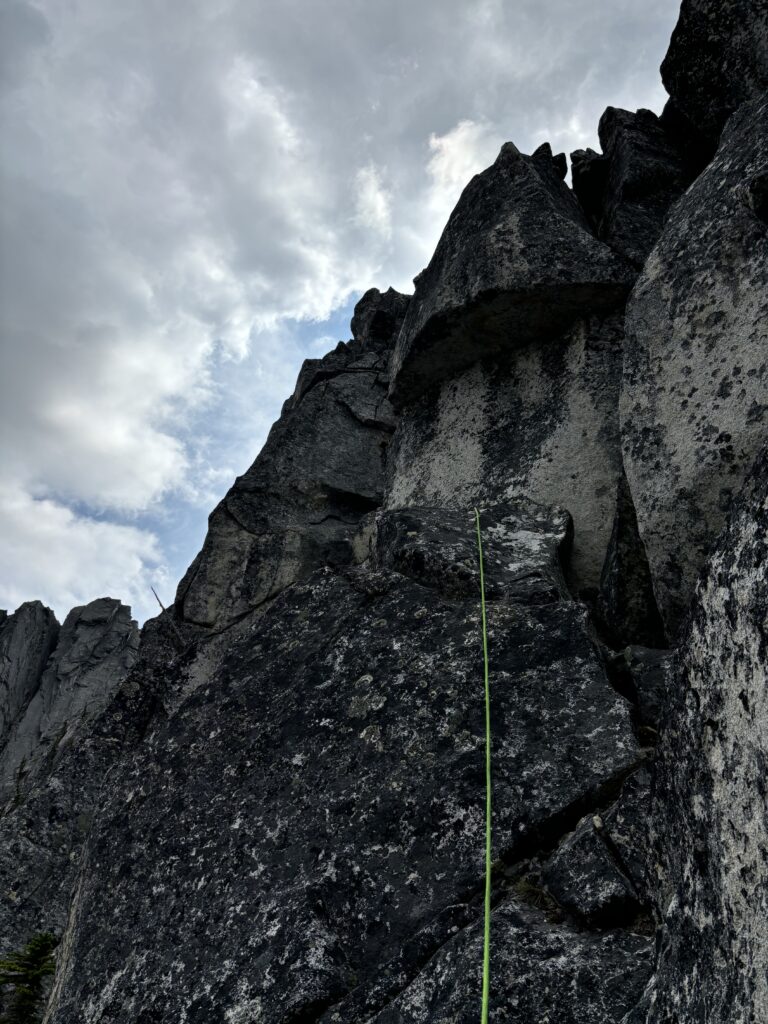
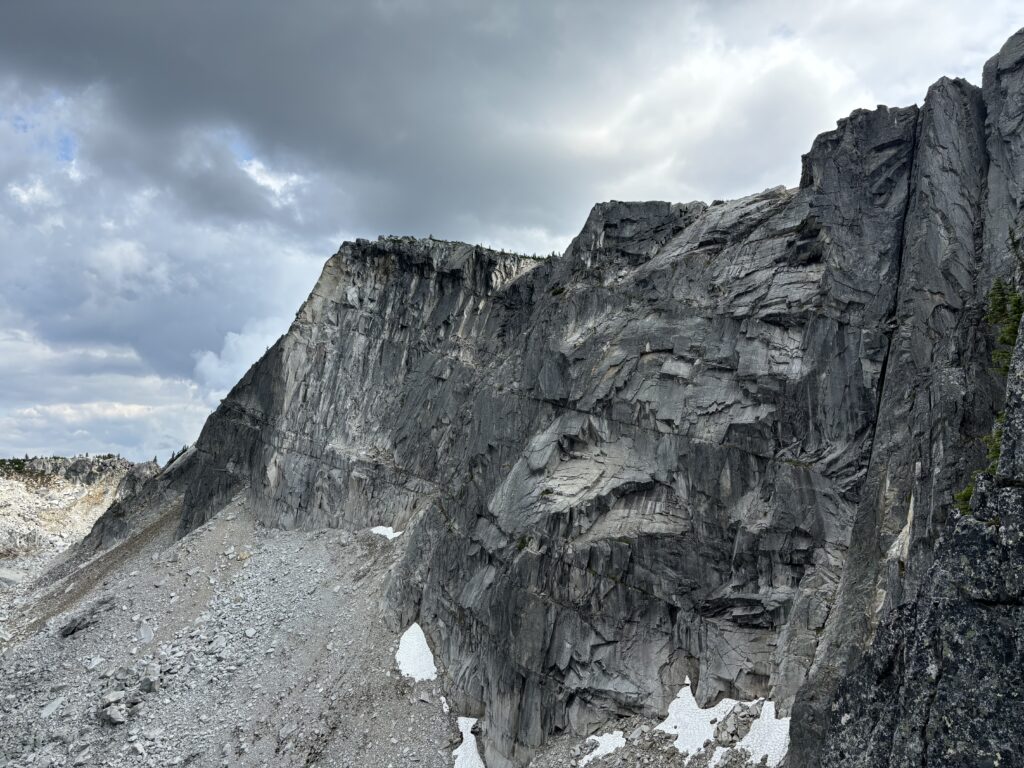
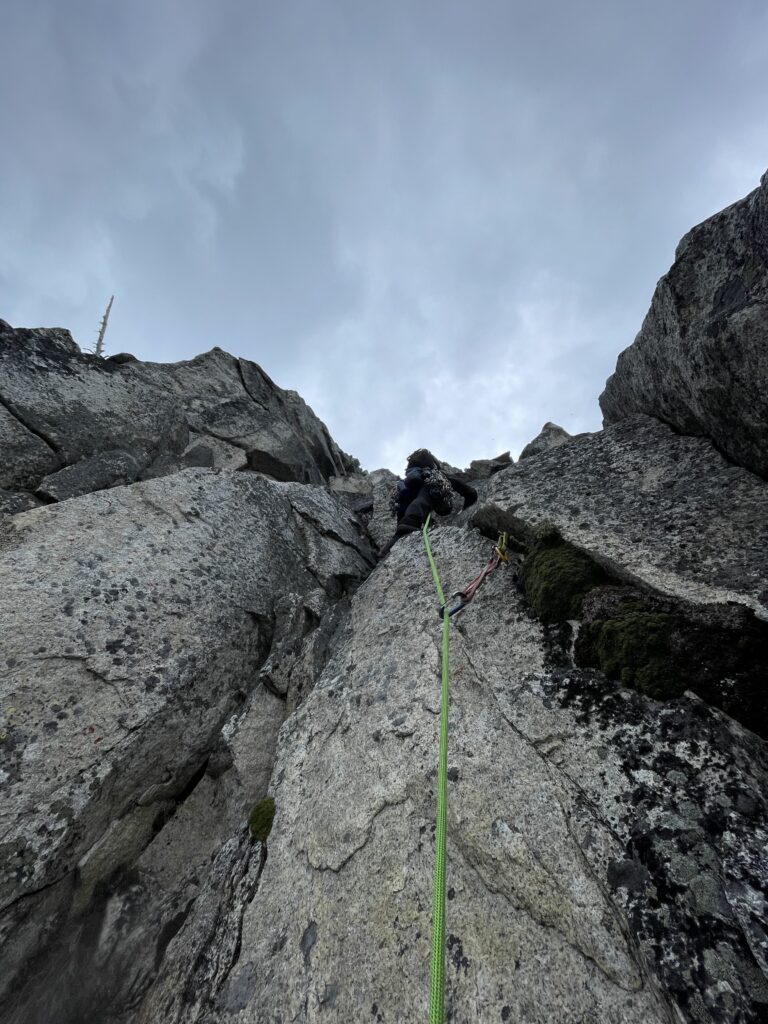
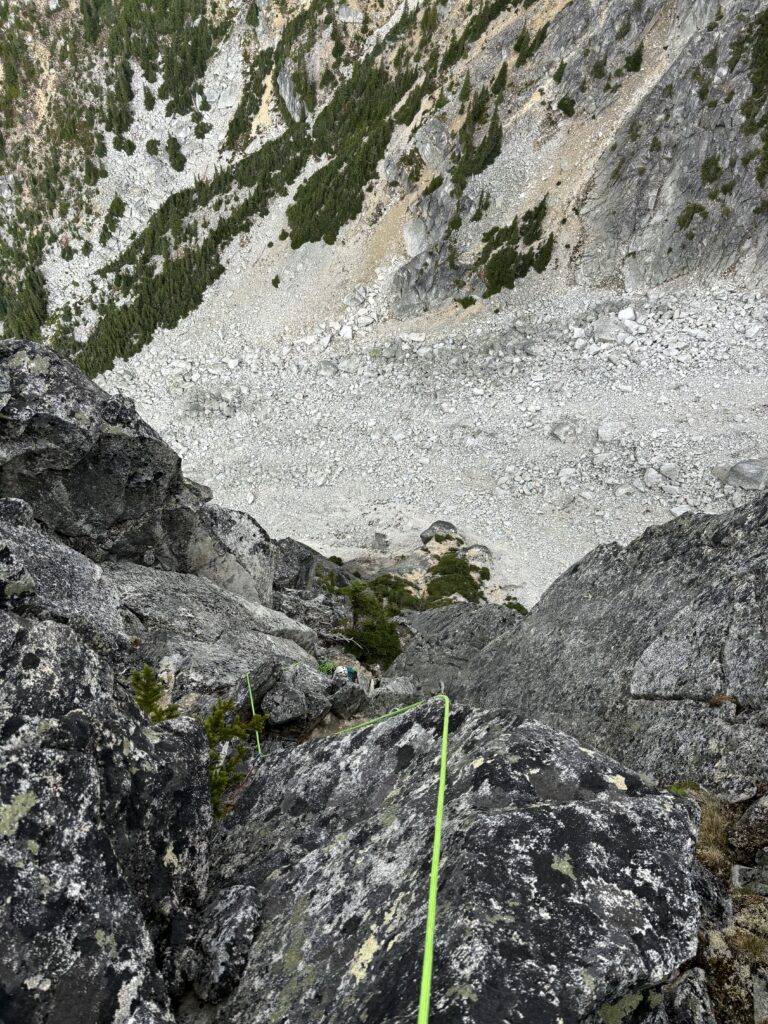
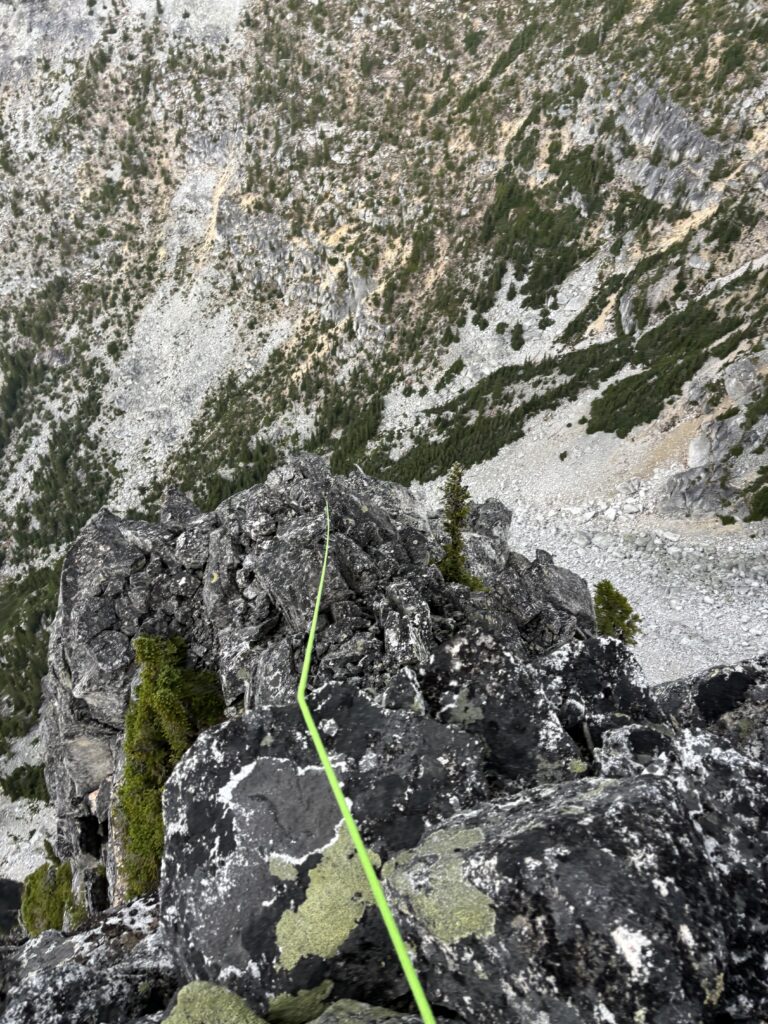
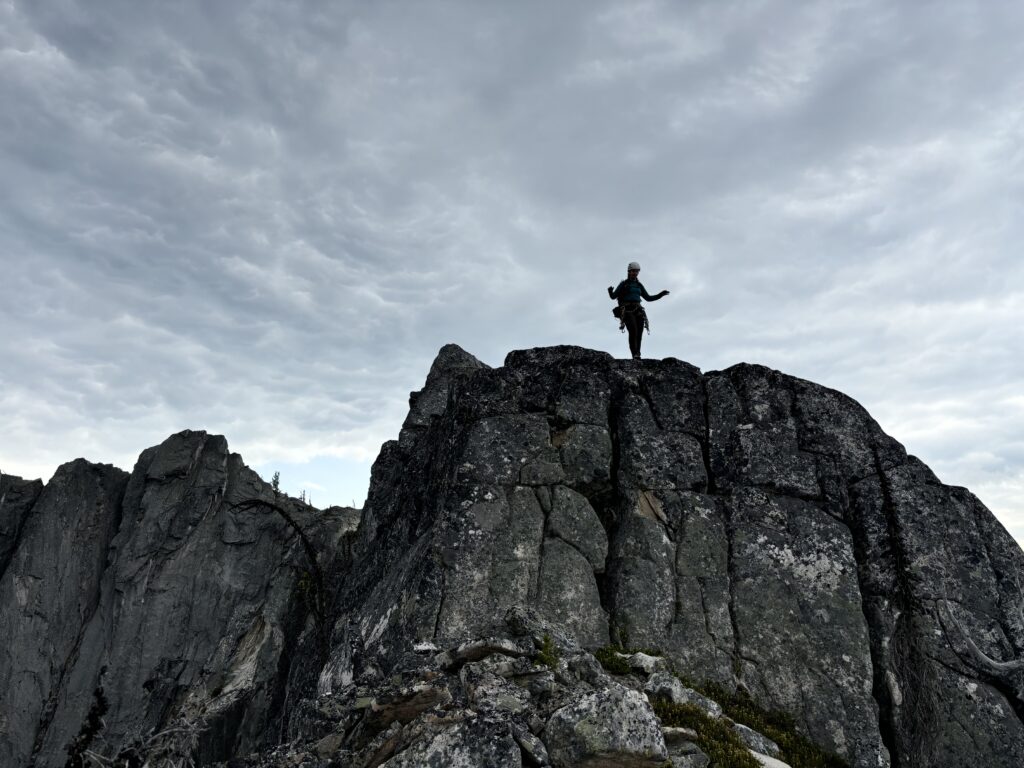
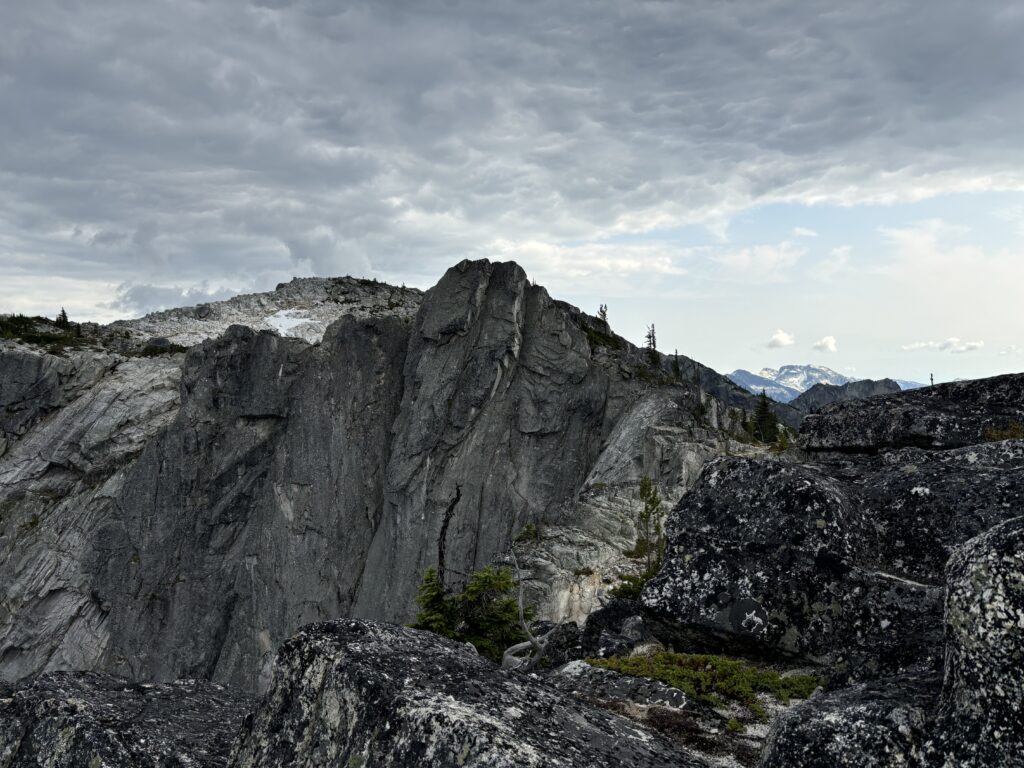
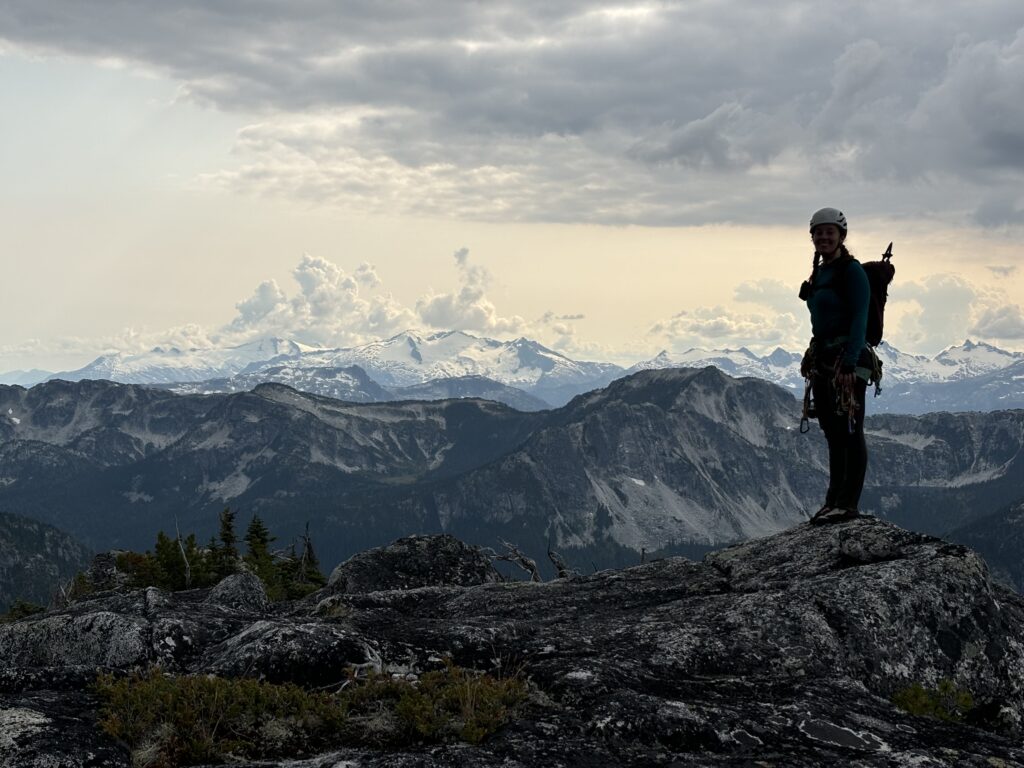
We were more excited about the true summit, so we skipped the central summit and started towards northern ridge line. I had observed that the terrain on this side was quite steep and I was concerned we would get cliffed out and have to rappel to reach the true summit. Thankfully, the ridge offered no resistance and we scrambled down with ease to the col. From there it was an easy hike to the top. Rather than return our route and do a steep chossy scramble down the cirque, we opted to continue in a loop along the ridge. This provided much nicer rambling terrain and we had a super chill descent back to the edge of the forest. Some 20 minutes later and we reached the road and made way back to the truck.
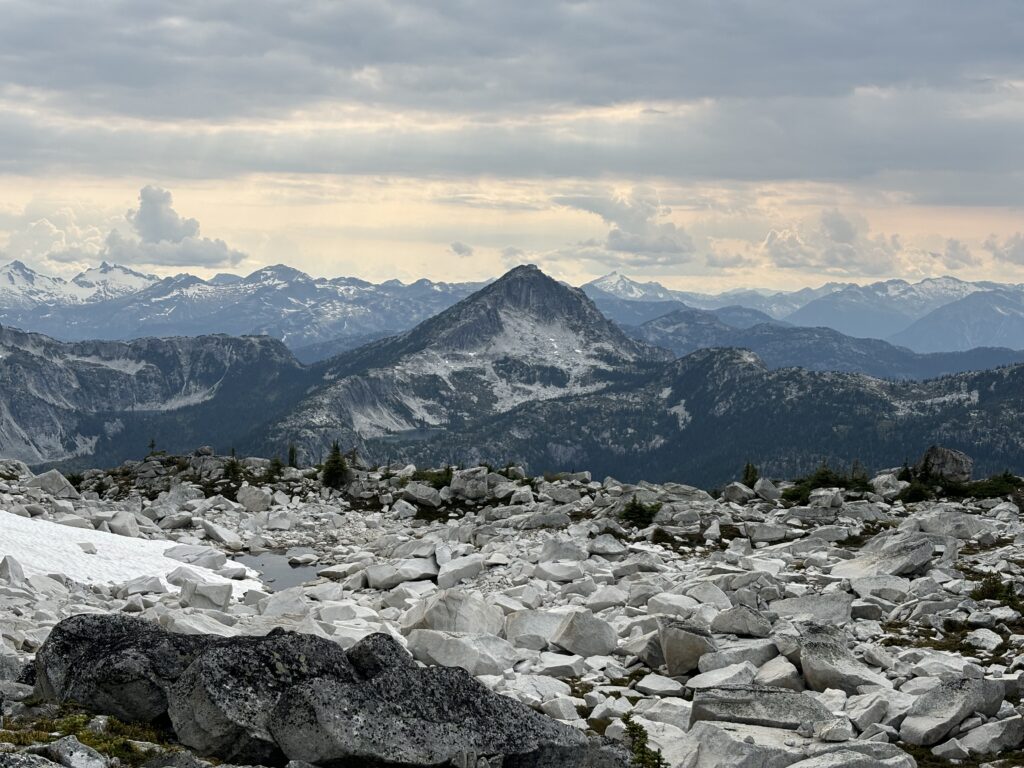
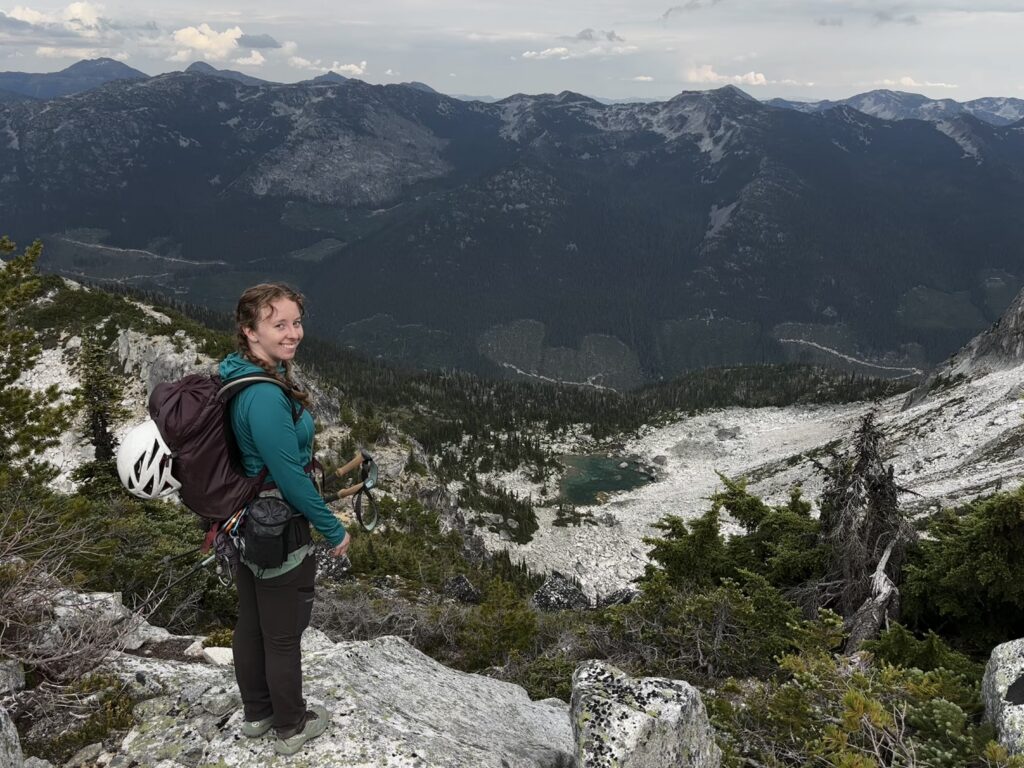
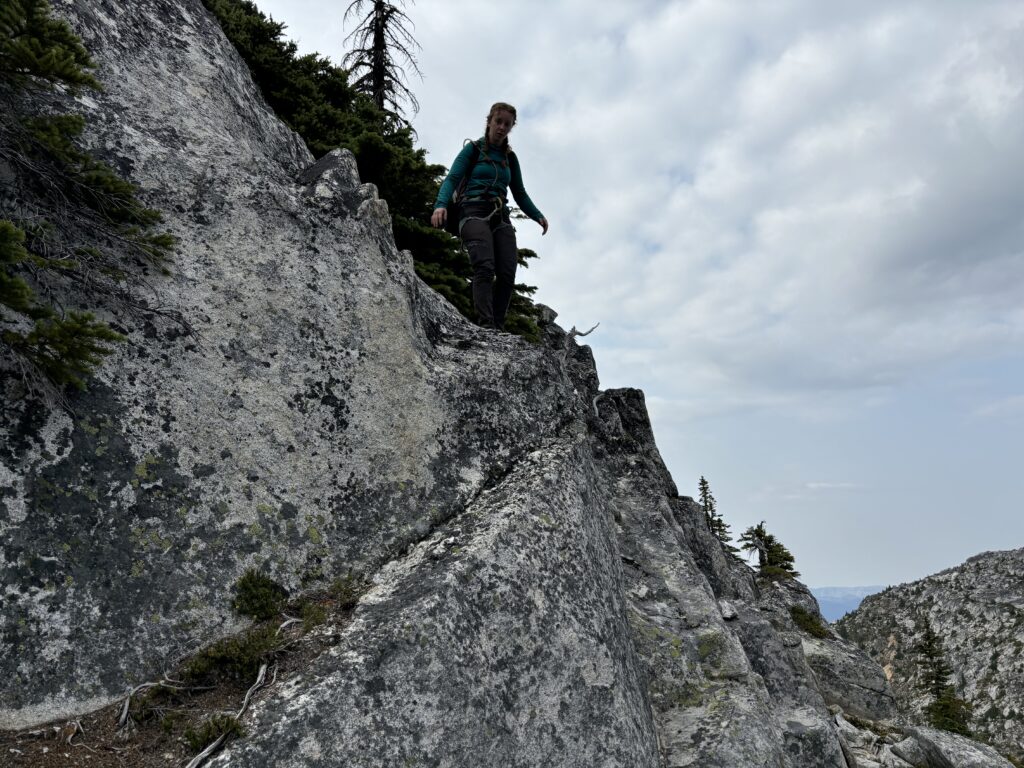
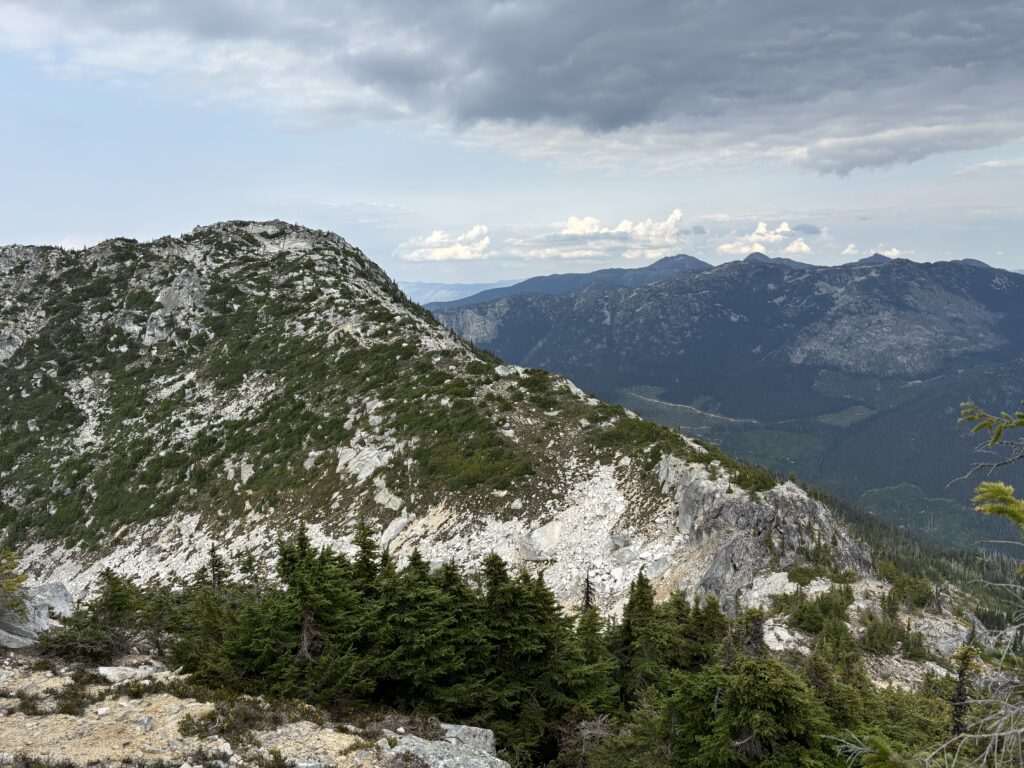

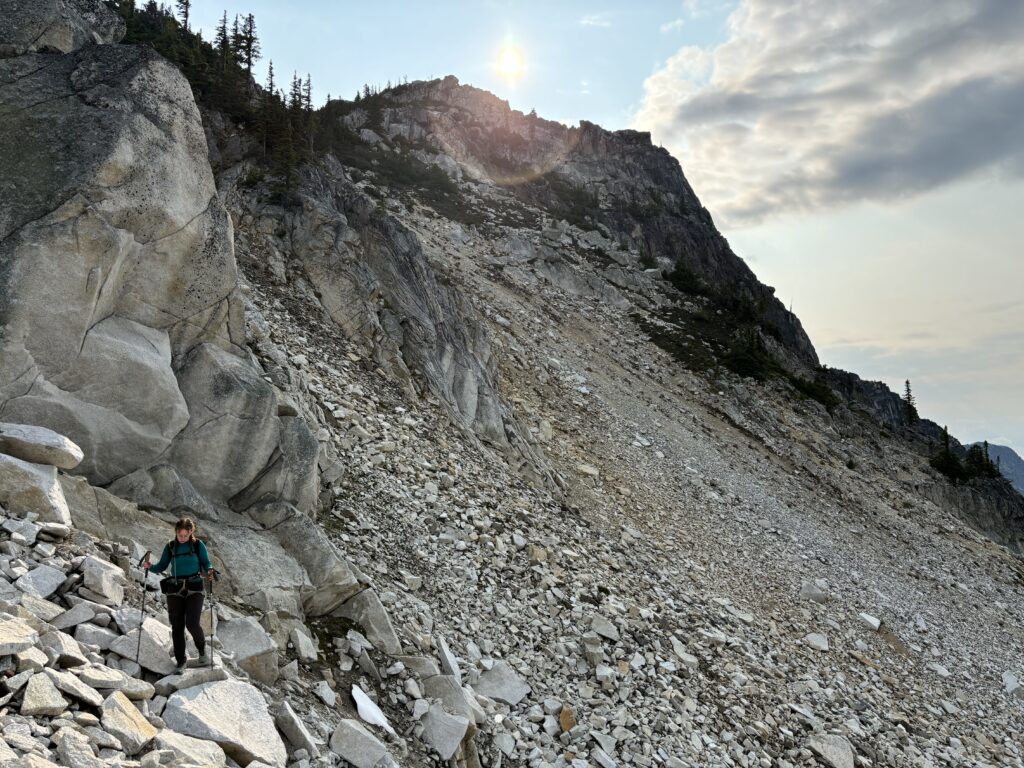
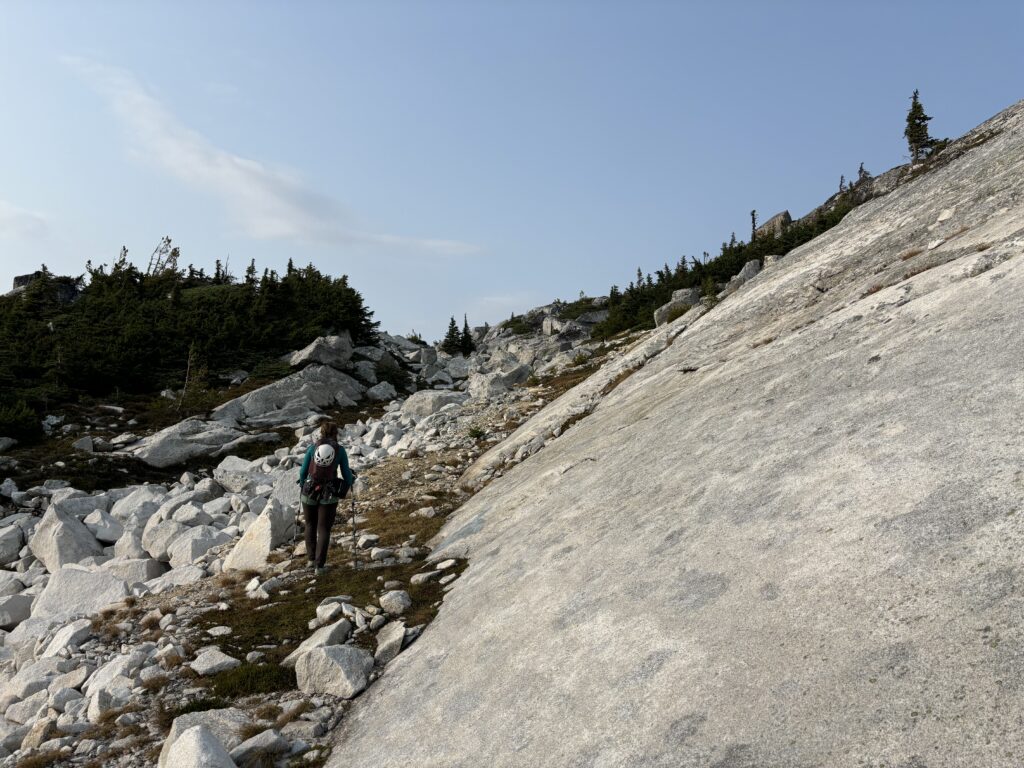
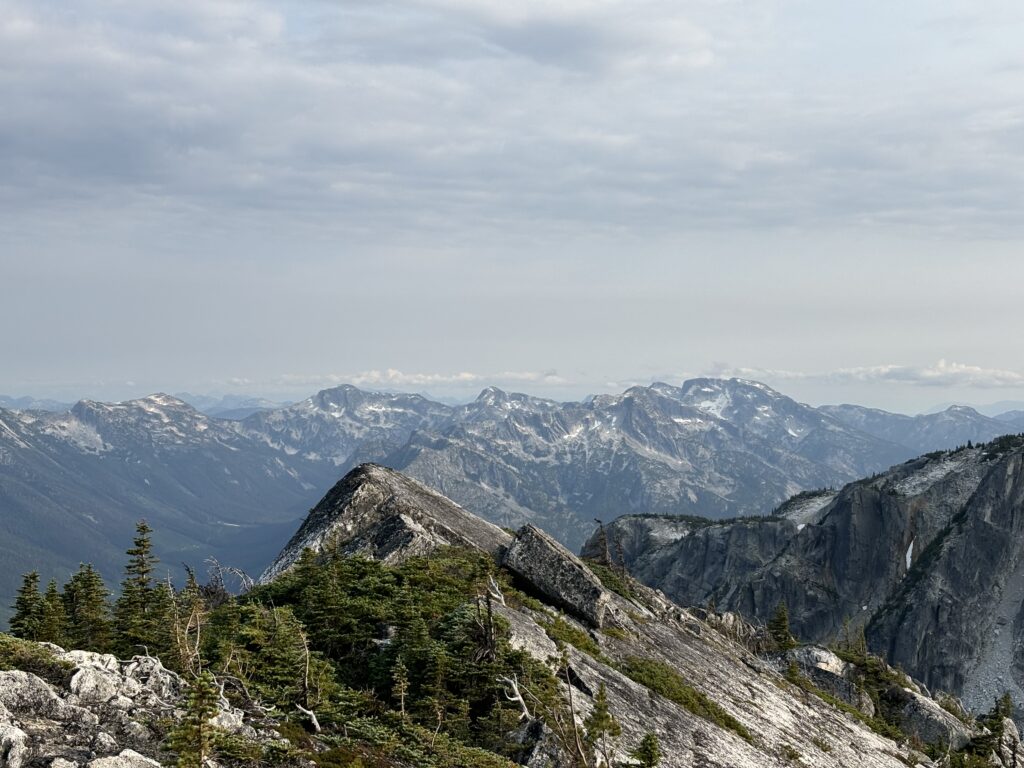
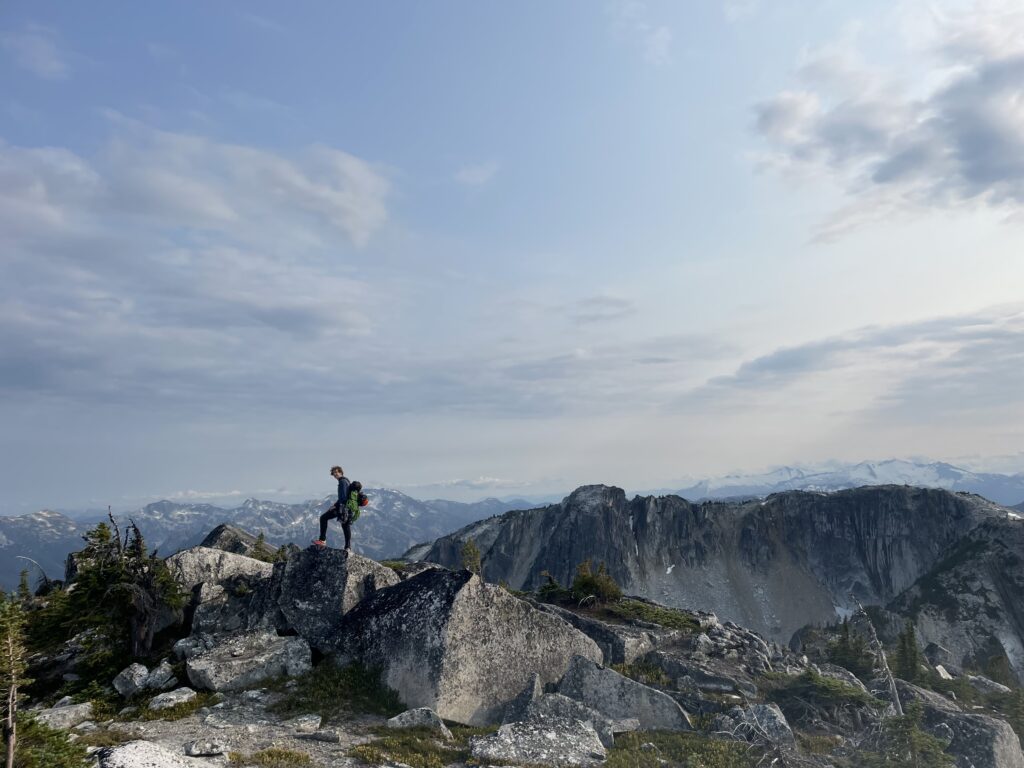
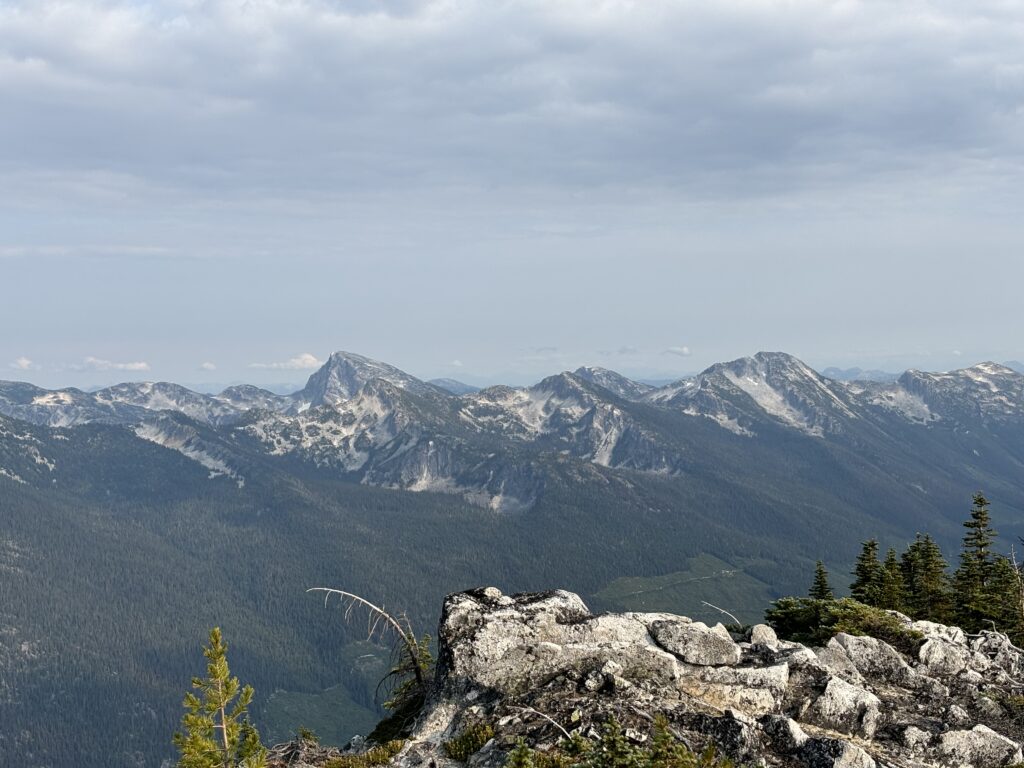
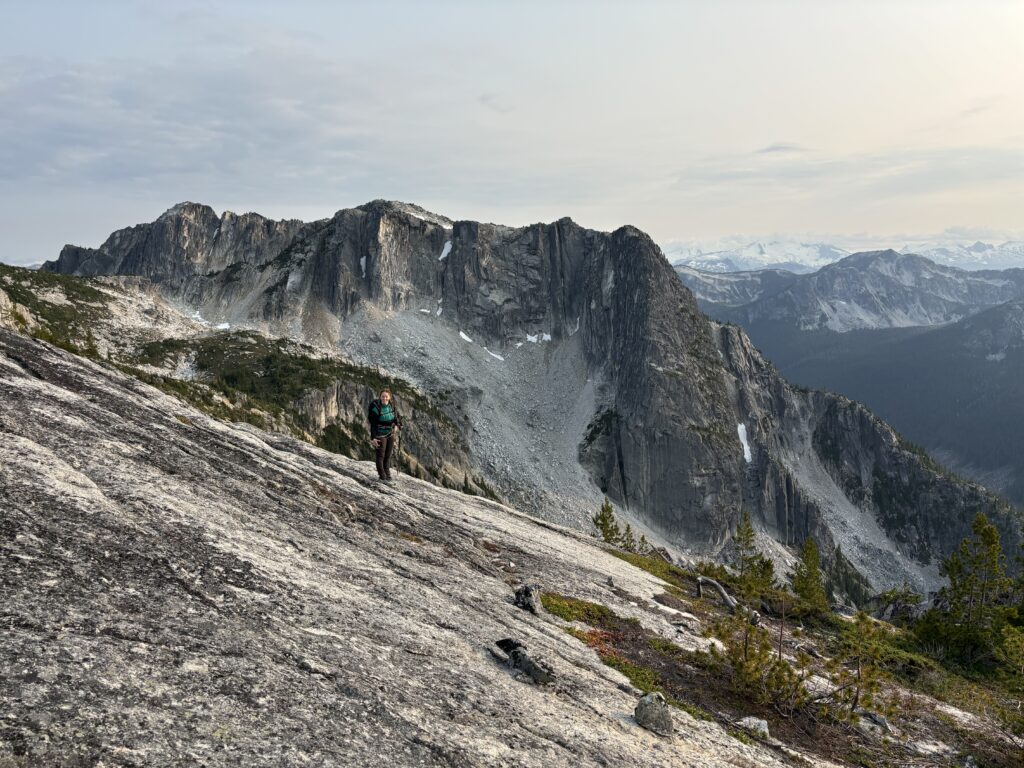
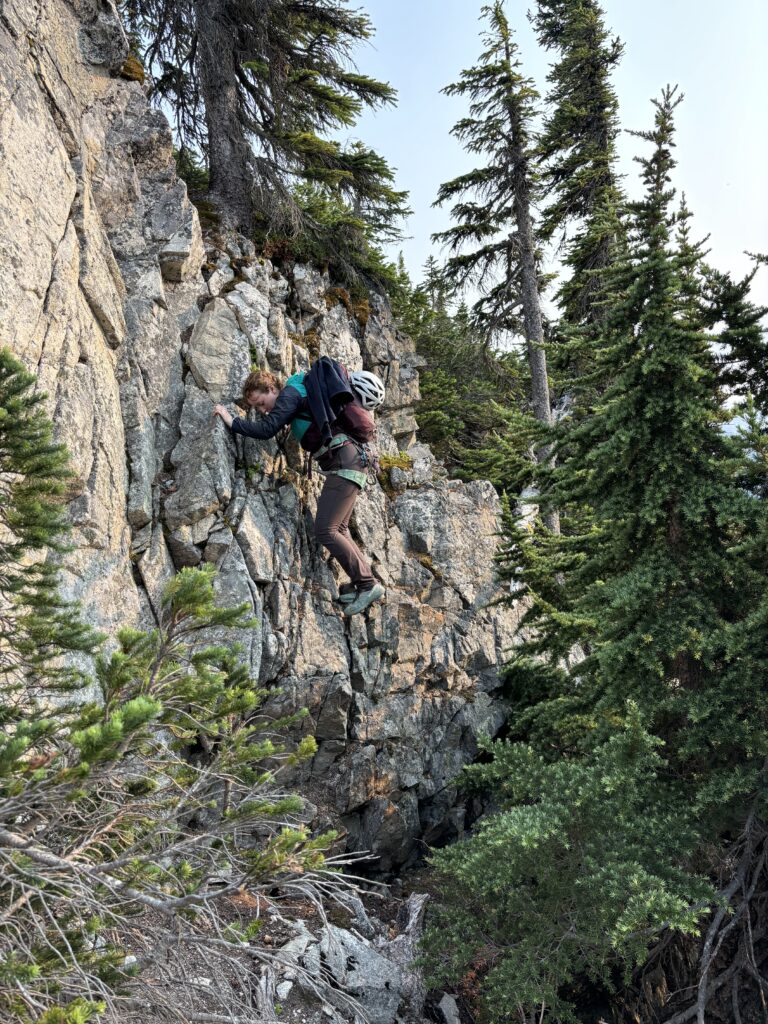
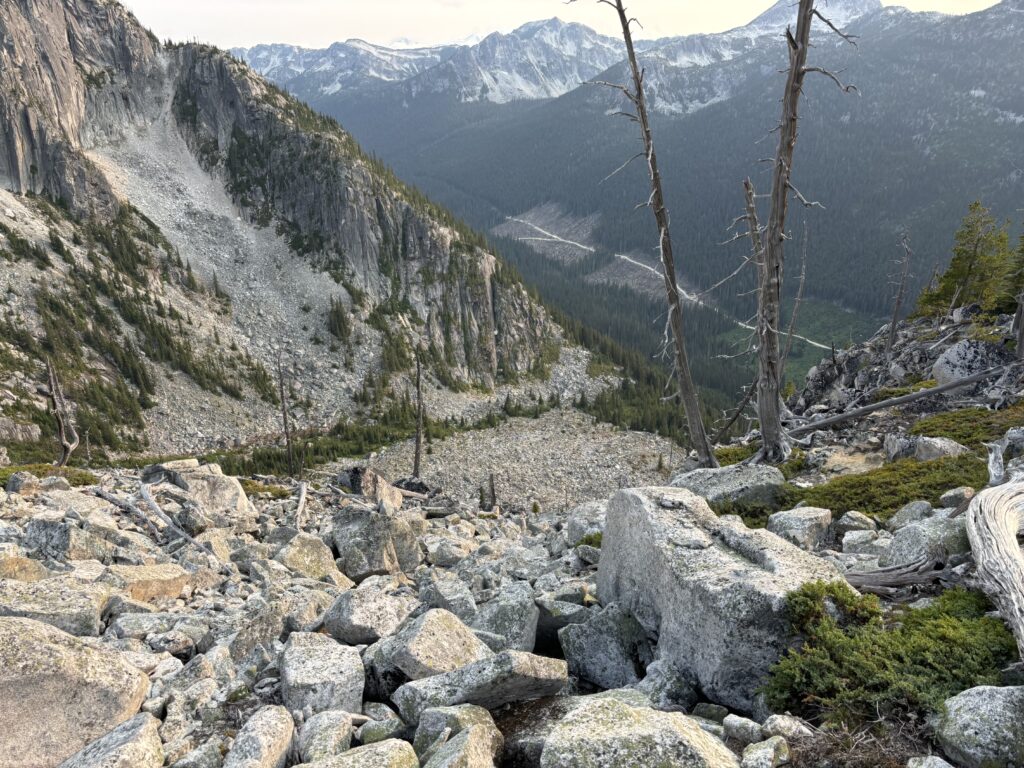
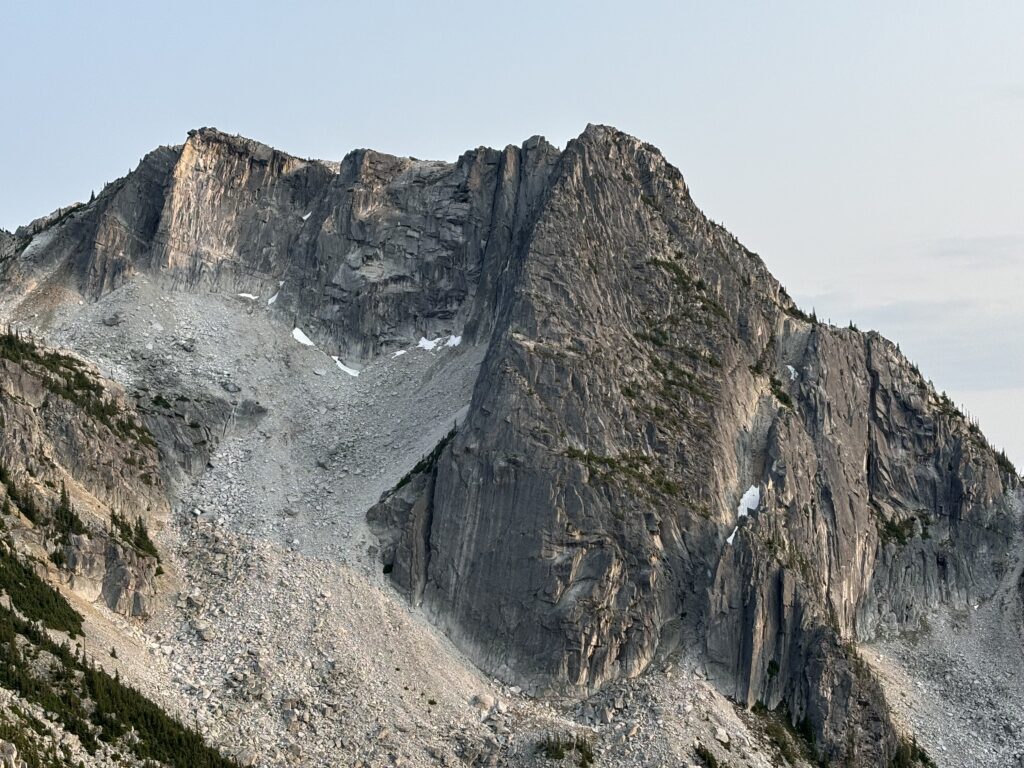
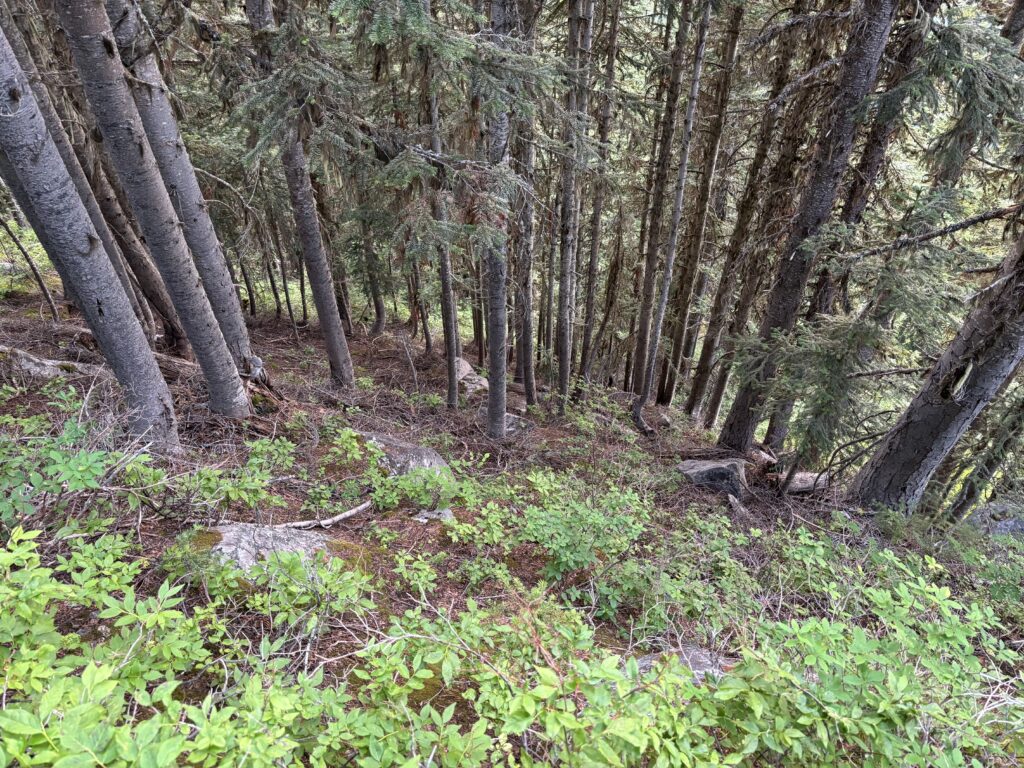
Normally, I’d feel rushed to get out given that we would have at least 3 hours of FSR driving another 2 hours on pavement to get home. This time however, we decided to camp one more night by our river spot and finish the drive in the morning. It was a great feeling to know that I wouldn’t have to do another late night stint down hours of service roads and so we decided to make some pasta dinner truck side with a cloud of mosquitoes to keep us company. After dinner prep, we drove back to East Harrison, camped and then stopped in Harrison Hot Springs for brunch. A fantastic weekend to say the least.
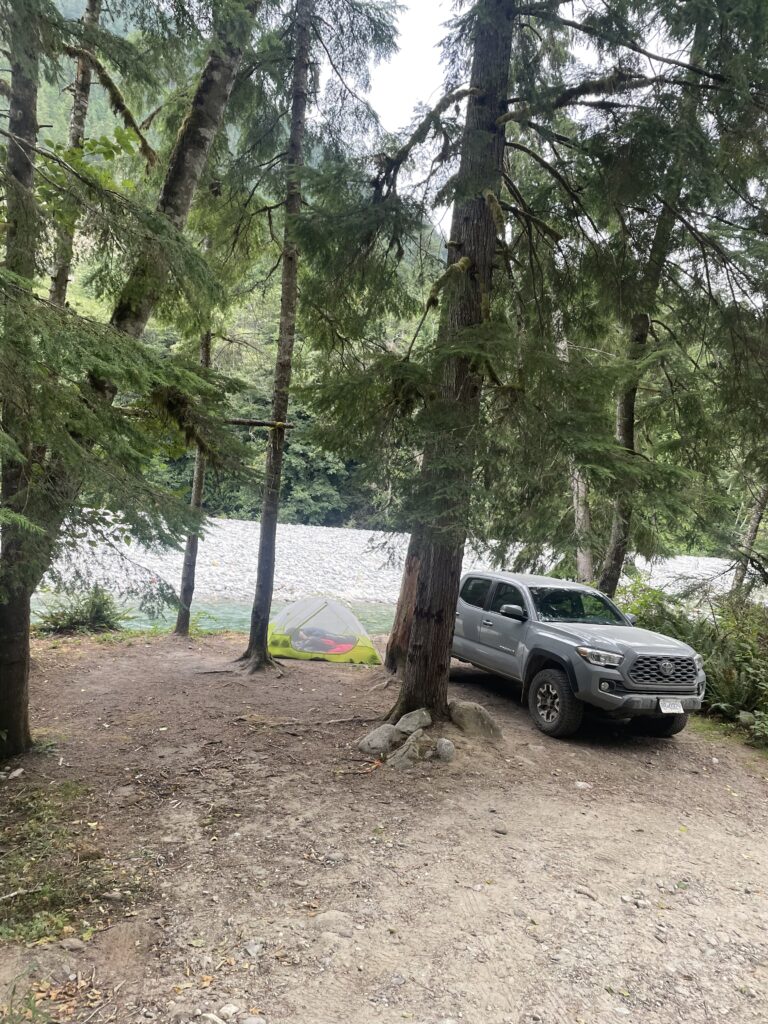
If you can manage the long drive, I’ll say this is a must do climb. While it doesn’t go to the true summit adding that on is an easy affair. Otherwise, wait until Kookipi is open from the North and you will have quite possible the easiest approach in history. 200m of forest ascent to the alpine and another 150m of boulder hopping to base of the climb (elevation not distance). I think this area will get very popular in the next few years if access stays open.
